
Savvy Travel Advice

Thomas Cook History: The Tale of the Father of Modern Tourism
Last updated: March 21, 2021 - Written by Jessica Norah 42 Comments
Do you know who Thomas Cook was and what contribution he made to the history of travel? Perhaps you have heard the name, seen it on the travel agencies that still carry his name, or maybe you’ve even taken a Thomas Cook tour. But my guess is that, like me, you don’t know too much about the man or how he fits into the history of travel.
Thomas Cook was a passionate man who was born into a world where most working class people worked long 6-day weeks and never traveled more than 20 miles from their home towns. Thomas would begin work at age 10, laboring in a vegetable garden for 1 penny per day; but with a lot of determination and hard work, this working class man would eventually build one of the largest travel companies in the world.
This post is dedicated to the memory of Thomas Cook and his role in history and will give you a good overview of Thomas the man, Thomas the travel pioneer, and a glimpse of what it was like to travel in the Victorian age.

Table of Contents:
Who was Thomas Cook?
Thomas Cook was born in 1808 in the small town of Melbourne, England but would be best known for his time living in Leicester. He would finish his schooling at age 10 to begin working, often for only a penny a day, to help support his family.
Throughout his life, Thomas Cook would work as a Baptist preacher, carpenter, furniture maker, printer, publisher, political advocate, and travel organizer. As a Baptist preacher, he would walk thousands of miles and earned so little that he often worked in the dark to conserve candles and oil.
After seeing the effects of drunkenness at an early age, Cook believed that alcohol abuse was one of the major roots of the many social problems in the Victoria era and would spend much of his time and talents supporting the Temperance movement in England for the rest of his life. In fact, Cook’s beginnings as a travel organizer would come about because of his temperance beliefs.
In 1841, he would arrange for a special train to take over 500 people from Leicester to Loughborough to attend a temperance meeting. For 1 shilling, passengers got round trip train travel, band entertainment, afternoon tea, and food. Not a bad deal!
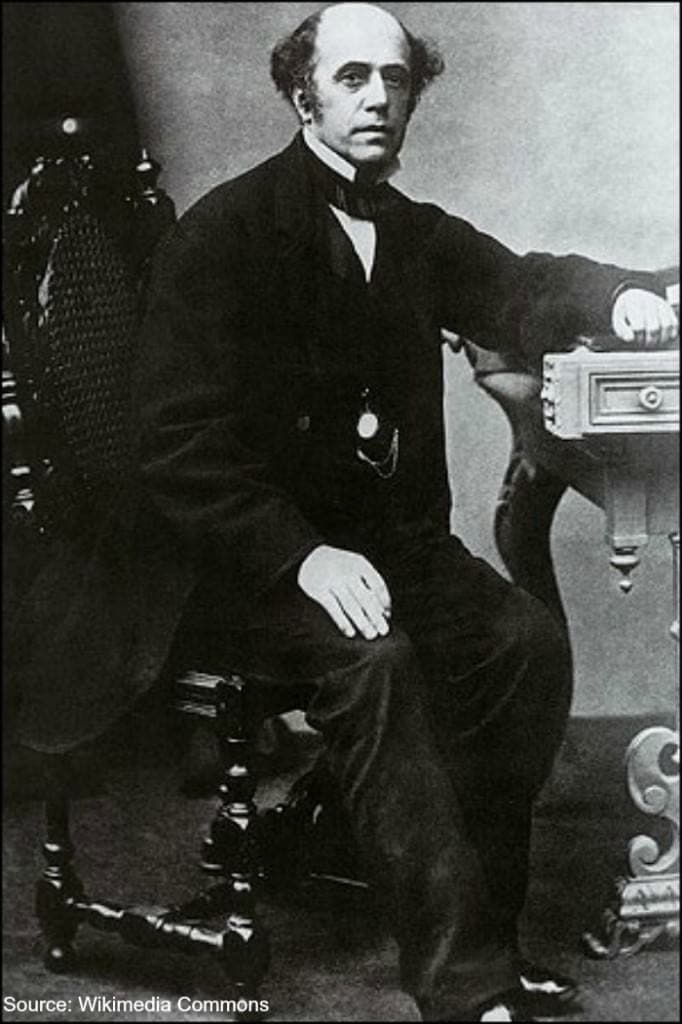
T he Birth of Thomas Cook & Son
Then in 1845, he would organize his first railway excursion for profit, and the following year he would begin offering trips outside England to Scotland, a country that captivated Cook and would remain one of his favorite destinations. For many of his early passengers, this was their first time aboard a train and the furthest distance they’d ever traveled from their home.
His trips kept getting bigger and in 1851, Thomas got the chance to organize railway travel and travel accommodations for people from the provinces to travel to London to attend the Great Exhibition orchestrated by Prince Albert. Thomas would transport over 150,000 people to London during the 6 months of the exhibition. This was one of the largest events in England and one of the largest movements of people within Britain!
Up until this point in time, most people in the provinces would be unlikely to travel to a town 20 miles away, let alone to the city of London. It must have been quite a shock for many people, who likely had never attended an event bigger than a county agricultural fair, to witness the Great Exhibition, where many of the greatest industrial inventions of the time were on display, in the bustling capital city of London.
His early tours would be marketed towards the working class, but later his company would go on to escort more middle class passengers and even organize travel for royalty, the military, and other important figures given his increasing reputation for being able to efficiently organize travel.
Interestingly, a large percentage of Cook’s travelers would be single or unescorted women who likely would not have been able to travel on their own (remember these are the days of Gone with the Wind ), but being part of an escorted tour provided them with both protection and independence.
Cook would rapidly expand operations, escorting tours throughout Europe, North America, and even led the first commercial tour around the world. But perhaps no destination was more sacred to Thomas than his tours to Egypt and the Middle East. Here Thomas could witness firsthand the Biblical lands he had read and preached about all his life, and spending time in the Holy Land was truly a realization of many of his dreams as a young man.
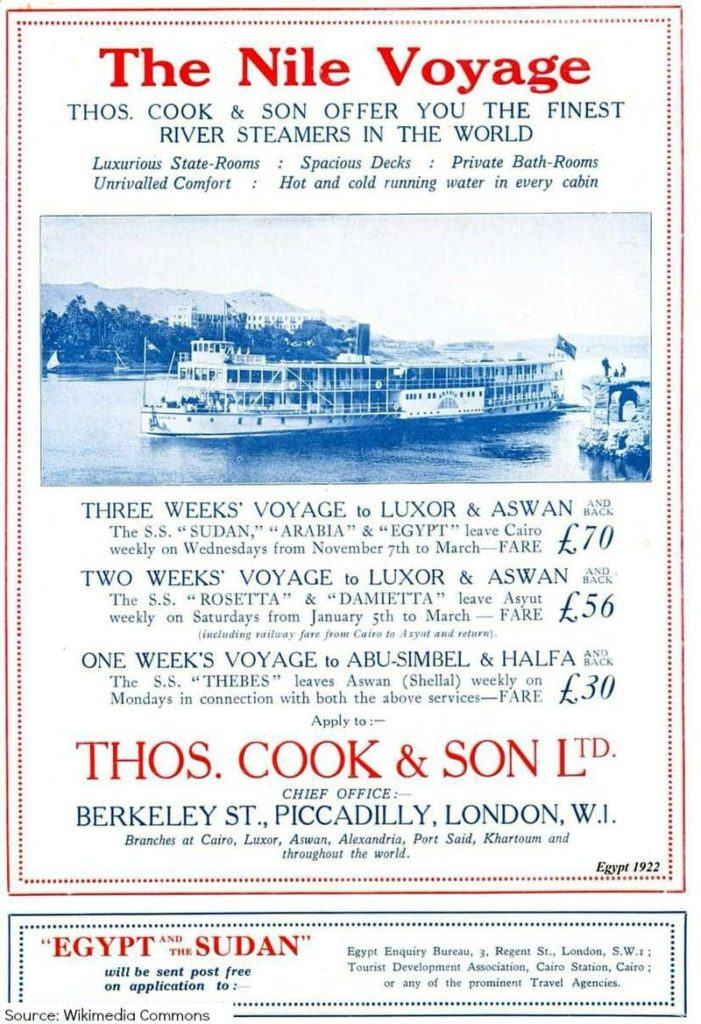
A Man with Many Personal Obstacles and Struggles
Although Thomas Cook & Son would thrive and go on to become one of the largest travel agencies in the world, things did not work out as well for Cook in his personal life. Thomas’ father died when he was very young as did his stepfather, and young Thomas was left to be raised by his widowed mother.
As an adult, he would suffer the tragic sudden death of his only daughter Annie—a young woman on the cusp of marriage—who shared a close relationship with her parents. Thomas’ wife would suffer a long period of ill health following her daughter’s death, eventually dying and leaving Thomas alone with his own failing health that left him almost blind.
In his later years, he had a very strained relationship with his only son and business partner John Mason Cook. Thomas felt that he was being pushed aside in his own company and eventually John Mason Cook would take over all operations from his father. The father and son never truly reconciled and spent very little time together towards the end of his life.
While Thomas’ poor health and eyesight made it increasingly difficult, he continued to be active in travel and temperance activities until near the end of his life. His son would continue to expand the travel business.
What was it like to Travel During the Victorian Era?
Thomas lived during the reign of Queen Victoria—the Victorian era—and while romantic imaginings of spending time aboard the famous Oriental Express, sailing on luxury White Star Line steamships, and staying in grand palatial hotels may have been partially true of the wealthiest of travelers, these are far from the accommodations you could expect as a working class or middle class traveler.
Before widespread railway transport, the stagecoach reigned as the quickest way to get around and only the wealthy could afford such conveniences. So poorer people often walked, hitched rides on the back of wagons and carts, or, if lucky, rode a horse or donkey. In the early days of railway travel, third class train accommodations were open wagons, some without seats, where passengers would have to worry about the wind, sun, dust, locomotive smoke, and glowing hot embers.
During Cook’s travels—particularly his early trips—you would need to worry about germs and disease as very little was understood about germs at the time and the lack of widespread refrigeration and hot water heightened the chances of disease. Restaurants, flush toilets, and even running water were not staples in Great Britain, let alone the rest of the world. Communication was slow and done primarily by postal mail, sometimes taking weeks to confirm reservations or transmit a message back home.
However, things were not all bad. During Thomas’s life so much would change that would make travel faster, cheaper, and more comfortable than ever before. Improvements in the postal service, use of the steam engine, opening of the Suez canal, and the great expansion of the railways would make it possible for Thomas Cook to accomplish things that would not have been possible a generation before him.

Thomas Cook’s tours, with their discounted organized group rates, made it possible for a lot of working and middle class people to travel for the first time. Cook believed that travel could help educate and enlighten people who, like him, often did not have a proper school education, eliminate prejudices and bigotry, and be a healthy leisure alternative to visiting pubs, gambling halls, and whorehouses.
However, these new travel opportunities for the lower classes was not something that was widely appreciated by many of those in the upper classes of society. Until the nineteenth century, popular tourist destinations were almost exclusively the playground of the wealthy who could afford the time away and expensive cost of travel. The upper classes did not want to mix with the lower classes when traveling.
As Thomas Cook and others began to offer affordable excursion tours to popular destinations such as English country homes (e.g., Chatsworth House), the Rhine River valley, the French Riviera, Egyptian pyramids, and the Swiss Alps, wealthy travelers complained about what they saw as a bunch of uncouth, uneducated common people invading their exclusive travel paradises.
They criticized Thomas Cook and the excursion travelers, and this criticism likely wounded Thomas, who although he strongly believed in the right for all people to be able to travel, he also strived to be accepted by the upper echelons of society. Despite his success, he never was accepted by the upper classes as he was not of gentle birth, but was a working man and a Baptist in a country still largely controlled by wealthy Anglicans.
However, despite all the criticism, the demand for discounted organized travel would only continue to increase. The number of travelers from London who crossed the Channel to continental Europe rose from 165,000 in 1850 to 951,000 by 1899. Travel agencies and organized travel were here to stay.
Why Thomas Cook was a Travel Pioneer
Thomas Cook was a travel pioneer who built one of the largest travel businesses in the world, a business that started very humbly as a way to transport travelers to nearby temperance meetings. Thomas was able to “organize travel as it was never organized before” and with the help of the railways and the steam engine, he was able to do it on a scale that would have never before been possible.
Although not the first to come up with most of the ideas, Thomas would make things like travel vouchers, traveler’s cheques, and printed guidebooks common and widespread. Cook would use his talents as a printer to print travel advertisements, bulletins, magazines, guidebooks, and train timetables. In fact, Thomas Cook Continental Timetables would be published from 1873 to 2013 (last edition was published in August 2013) and were for many decades considered the bible for European train travelers.
His religious fervor would make him seek out exotic locations such as the Middle East and his determination would lead to Thomas Cook & Son opening offices around the world. Perhaps his greatest legacy is that he helped make it possible for a new group of people to engage in leisure travel. Cook understood well the drudgery of hard work and trying to support oneself on a meager income, and his tours provided working and lower middle class people the opportunity to explore a world they could have only have read about otherwise.
The Thomas Cook & Son name continued to exist as a travel company, offering travel tours until 2019. The company traded for 178 years. But it had not been a family-run business by the Cook family since the 1920’s when Thomas Cook’s grandsons, Frank and Ernest, sold the company to the Belgian Compagnie Internationale des Wagons-Lits et des Grands Express Européens, operators of most of Europe’s luxury sleeping cars, including the Orient Express .
In the 1940’s it would become state-owned by the British Transport Holding Company. It would continue to change hands over the years. In 2001, it would become owned solely by C&N Touristic AG, one of Germany’s largest travel groups, who renamed the company, Thomas Cook AG.
Thomas Cook became one of the world’s largest travel agencies and the oldest in the UK. Its famous slogan developed by advertising expert Michael Hennessy: “Don’t just book it….Thomas Cook it” became well-known around the world.

The Bankruptcy and Closure of the Thomas Cook Travel Agency in 2019
Sadly, the travel agency and airline that carried the Thomas Cook named declared bankruptcy in September 2019, leaving about 150,000 British travelers “stranded” all over the world (as well as a number of other nationalities). Perhaps the most devastating effect has been the immediate loss of thousands of jobs for people in the UK and abroad.
The travel agency, however, was properly insured and protected and most of those who booked a trip can apply for a refund, and those left “stranded” on trips were repatriated by the UK. It was the largest repatriation effort since World War 2.
In October 2019, it was announced that all the Thomas Cook travel agency offices in UK will be taken over by Hays Travel and rebranded under their name. Most of the reopened offices are being staffed by former Thomas Cook employees. Hays Travel is now the largest independent travel agency in the UK, and you can read more about them here .
In 2020, the COVID-19 pandemic wreaked havoc on all sectors of the global travel industry and Hays Travel was forced to close its travel offices in the UK for a large part of the year. Many of the former UK Thomas Cook offices have now been permanently shuttered and many of the employees who had been rehired were sadly made redundant. You can read more about that here .
Although the future of the Thomas Cook name in travel may be uncertain, I would be very surprised if the name does not continue to be associated in some way with a travel agency.
In fact, although all the UK based companies have stopped trading, some Thomas Cook owned resorted, like Cook’s Club are still operating. Some of its subsidiaries in some other countries are still trading as normal but are also in danger of closure.
What I Learned from Reading about Thomas Cook
Thomas Cook was a quite extraordinary self-made man. He had so many occupations and business ventures and so many setback and failures, even declaring bankruptcy at one point, but he was so persistent and never gave up. He was a passionate man who fought for his Baptist faith, beliefs in equality for all people, and for temperance.
In addition to being impressed by the determination and innovativeness of Thomas Cook himself, I was also quite intrigued in the ways that travel has changed and the ways it has not. We have come a long way since Thomas Cook escorted his first tour as we can travel so much lighter, faster, and more conveniently than would have seemed possible to Victorian age travelers who would accept unheated train cars, month-long ocean crossings, and hotels without hot water.
Cook, a teetotaler until his death, would likely be shocked by the tourism industry’s promotion of sun, sea and sex and the partying and drinking associated with many travel destinations. Indeed, many of these locations are the most popular destinations for British travelers on package holidays.
However, some things have not changed very much. Criticisms of organized travel remain with the notion that independent travel is better and people love to make the subjective “traveler” versus “tourist” distinction. There are also still locations that remain primarily the playgrounds of the wealthy although never like during the Victorian age. Travel remains class segregated as those who can afford to do so can fly in first class seats, dine in the finest restaurants aboard ships, and sleep in the best cabins with little need to spend much time with other class passengers.
One of the things that I found perhaps the most interesting was the destinations promoted by Thomas Cook still remain, with few exceptions, major tourist destinations today. The country house of Chatsworth House is one of the most notable country houses in England today and people are still flocking to the Scottish highlands, Paris, Rhine River Valley, Swiss Alps, Egypt, the ancient city of Petra, Australia, and most of the other destinations promoted by Thomas Cook in the 1800’s.
While things have changed in some ways beyond recognition, many of the world’s wonders and great destinations continue to awe visitors as they must have awed those first pioneer tourists led by Thomas Cook.
Want to Learn More about Thomas Cook and Victorian Age Travel?
Resources about Thomas Cook (I used these in writing this article) :
-Hamilton, Jill. (2005). Thomas Cook: The Holiday Maker . The History Press.
-Piers Brendon. (1991). Thomas Cook – 150 Years of Popular Tourism . Martin Secker & Warburg Ltd.
-Withey, Lynne. (1997). Grand Tours and Cook’s Tours – A History of Leisure Travel, 1750 to 1915 . William Morrow & Co. [This book focuses on a broader view of the history of travel including a lot of attention to Thomas Cook tours and their impact on tourism]
-A great Wikipedia link to some of Thomas Cook’s Traveler Handbooks: http://en.wikipedia.org/wiki/Cook%27s_Travellers_Handbooks
Another book related to Thomas Cook on my to-read list:
-Swinglehurst, Edmund. (1974). The Romantic Journey – The Story of Thomas Cook and Victorian Travel . Pica Editions.

So what do you think about Thomas Cook and the Victorian Age of Travel? If you are interested in another article on travel during the Victorian age, check out our post on t wo American women who race around the world in less than 80 days .
Share this Post!
There are 42 comments on this post.
Please scroll to the end to leave a comment
Baskin Post author
February 28, 2024 at 3:26 am
Wow, so fascinating to read about the history of Thomas Cook, the visionary behind modern tourism. I definitely learned a lot from this about how His legacy continues to shape travel and hospitality industries, very educational post!
Jessica & Laurence Norah Post author
February 28, 2024 at 10:20 am
Thanks for taking the time to comment and glad to hear you enjoyed our article on Thomas Cook. And yes his contributions to the travel industry can definitely still be seend today!
Best, Jessica
Chandra Gurung Post author
May 9, 2023 at 4:15 am
Very interesting post, thanks for the great travel History !!
May 13, 2023 at 8:06 am
Hi Chandra,
Glad you enjoyed our post on Thomas Cook, thanks for taking the time to comment!
Karim Post author
October 29, 2022 at 3:01 pm
Thanks for your blog post on Thomas Cook, very helpful, nice to read.
October 31, 2022 at 10:04 am
Thanks for taking the time to comment, glad you enjoyed our post on Thomas Cook and a bit of the history of the man and his company 😉
Jeanne Gisi Post author
May 24, 2022 at 1:06 pm
While cleaning out some boxes filled with mementos of my travels over the years, I came upon an Itinerary prepared by Thos. Cook & Son for a 6 week European trip in 1965 for my parents & I (I was 13)! It was so fascinating to see the level of detail for each stop, which included England, France, Italy, Spain & Germany; and the beautiful cover & fancy paper used to produce the itinerary. I went looking on the internet to see if they were still in existence & found your blog, which I found so informative about the founder & the many iterations the company had gone through. Probably the most amazing detail in this itinerary was discovering that for hotels in 4 different cities, train rides, rental car & private transport for the entire trip was shown at $328 per person! Astounding! Appreciated reading your historical information about this venerable company.
May 25, 2022 at 5:10 am
So glad you enjoyed our article on the history of Thomas Cook.
Oh, wow, that must be wonderful finding old treasures from your family travels. I love things like that. And yes a 6 week trip for $328 per person (about $3,000 per person in today’s money) would still be a good value today for all that was included for a 6-week trip. And it would have taken longer to put together an itinerary then as the travel agent would have needed to call or mail for inquiries and reservations rather than clicking buttons on a computer.
Yes, Thomas Cook has gone through a lot in recent years. Hays Travel purchased most of the Thomas Cook offices/stores and hired back a lot of the staff in 2019. But then of course the COVID-19 pandemic came soon after, and many of the stores have since re-closed and a number of people had to be let go. For example, our local travel store (in Bath, England) went from a Thomas Cook to a Hays Travel to being empty again in about a year’s time. It will be interesting to see what will happen with traditional travel agencies like this as international travel goes back to 2019 levels and if they will continue to flourish in the face of online competitors.
Ruth Deeks Post author
March 21, 2021 at 8:39 am
Very interesting. My parents who were Baptist missionaries in India had told me that Thomas Cook was a Baptist and gave a special rate to missionaries travelling by boat to and from India, the journey taking 5 weeks approx. I am talking about the 1930s to 1950s. What a shame the The Thomas Cook co. was sold out of the family and went bankrupt.
March 21, 2021 at 9:05 am
Glad you enjoyed our article on Thomas Cook and the history of his travel business. He is an interesting man combining his religion with travel.
Yes, it is sad that the Thomas Cook business went bankrupt. Sadly, the UK travel company which took over most of the Thomas Cook offices in the UK, Hays Travel, has now had to close many of these offices in 2020 due to the coronavirus. This has also sadly left many of the former Thomas Cook employees, many of which were then re-hired by Hays Travel, without a job again. It’s been a very tough couple of years for UK travel agents. Hopefully, 2021 will be a better year for them.
Uwingabire Faustine Post author
November 28, 2020 at 1:03 pm
Hello I was inspired by the theory of Thomas Cook, but wanted to know above all that why was he important in tourism industry?
November 29, 2020 at 7:05 am
Glad you enjoyed our post on Thomas Cook and learning about his life. Hopefully you found your answer about why Thomas Cook was important in the tourism industry from the article. But if not, I’d go back and read the “Why Thomas Cook was a Travel Pioneer” section as that covers a good summary of his achievements related to travel and his importance in the tourism industry.
If you have any further questions, please let me know!
Seba Campos Post author
July 30, 2020 at 6:49 pm
Hi! I am a tourism student from Argentina, I really liked your article and it was extremely revealing for me. I’m working on the Thomas Cook story.
Do you have any information about his family? Why did they decide to sell the company? Why did your son remove him from the company? Thank you so much!
August 1, 2020 at 5:28 am
Glad that you are finding my article helpful in writing your paper on Thomas Cook.
If you are looking for additional information, I’d recommend checking out one of the books about Thomas Cook such as this one by Jill Hamilton published in 2005. The books will give you more details and context than you’ll find online. You should be able to buy it online through Amazon or ebay.
The Thomas Cook company website used to have some good historical information but that information has all been removed since Thomas Cook closed in the UK.
Hope that helps, Jessica
Colin Post author
October 6, 2019 at 5:41 am
Hi Jessica, I was just searching about Thomas Cook after the recent bankruptcy as I was one of the people affected. Luckily for us, we were not on the tour and it was booked several months away, so it seems all will be well in terms of getting our money back. We also have plenty of time to rebook our holiday, so we are luckier than most.
What a great post and what a detailed history of Thomas Cook and his travel company. I have used Thomas Cook to book holidays for years and never knew anything about Thomas Cook, the man or his background. This was a very interesting read!
October 6, 2019 at 6:09 am
Sorry to hear that you were one of the people affected by the Thomas Cook bankruptcy and closure. But I am happy to hear that it sounds like you will receive a full refund for your booked trip and will have plenty of time to rebook your holiday.
So glad you enjoyed our post. Yes, the history of Thomas Cook as a person is very interesting and he was definitely a pioneer in the field of tourism. I am sure the Cook name will continue to be associated with a travel company in one way or another in the future since it is so well recognized worldwide.
Happy travels, Jessica
Eran Post author
December 26, 2018 at 10:21 pm
Hi, Great post! Towards the end of it you mention that a lot of things haven’t changed in travel. However, I think in recent years, with the rise of low-cost flights, now tourism is more reachable to all segments than ever before…
December 27, 2018 at 3:37 am
Hi Eran, Yes, it is amazing how much hasn’t changed and in other ways how much things have changed since the time of Thomas Cook!
I do think that low cost travel has enabled more people to travel, but in more recent times it is probably more due to better economic conditions in countries than things like budget airlines, as we are seeing huge increases in the number of travelers from places like India, China, and Latin America. Travel for leisure is commonplace in many countries, but still remains something for those with money as much of the world’s population can not often afford to travel internationally for leisure. According to Hans Rosling, it is estimated that only the richest 1 billion people in the world live where they can easily afford airplane tickets, and 2 billion people spend less than $2 a day.
Interesting to look at travel from a global perspective as it can be easy for Western people to take it for granted.
Alok kumar mandal Post author
August 17, 2018 at 8:15 am
very interesting and useful facts about Mr. Cook…
August 17, 2018 at 11:32 am
Hi Alok, Yes, Thomas Cook was an interesting man and we the see the effects of his legacy on modern travel all over the place, especially since we are now living in the UK. Best, Jessica
Bryant Kerr Post author
November 4, 2017 at 10:08 pm
I have a old traveling trunk that have the names Colonel Thomas Cook and Sons the other name is Lieutenant Colonel Rodger Young military number 03443 79 New Delhi does anyone know anything about this trunk
November 7, 2017 at 8:29 am
Hi Bryant, I don’t know anything about the trunk, but there is a fairly well-known American from Ohio that was in the military named Rodger Wilton Young although not sure if he was ever in New Delhi. There was also a Thomas Cook who served at the Addiscombe Military Seminary in 1837. But the Thomas Cook & Sons are probably just the ones that arranged the travel so you’ll probably have better luck tracking down Young. Best of luck!! ~ Jessica
Taranath Bohara Post author
January 31, 2017 at 5:09 am
I love this guy Thomas Cook, who helped bring affordable tourism to the world. Many people are involved and have followed his principles. He was a great who taught the lesson of tour and travel. Great blog post!
January 31, 2017 at 6:20 am
Hi Taranath, Thanks for taking the time to comment. Yes, I really love the story of Thomas Cook and I don’t think a lot of people know the influence he had on the modern tourism industry but at least his name is still carried on in the company he founded. Glad you enjoyed our article! Best, Jessica
LOUIS GEEN Post author
January 31, 2017 at 9:11 am
Could this be the same man? I am a Freemason and a member of the Port Natal Masonic Lodge in Durban, South Africa. The Lodge is almost 160 years old, having been consecrated on 12th August 1858. According to our records Thomas Cook was Master of the Lodge during the Masonic year 1883 – 1884. The Lodge is in possession of a beautiful oil painting of Thomas Cook that was donated by him to the Lodge. Until I discovered Thomas Cook’s name in the Port Natal Lodge’s records, I was not aware that the Father of Modern Tourism resided in South Africa. Could our Thomas Cook be the same man that turned tourism into the industry it has become?
January 31, 2017 at 10:22 am
Hi Louis, How interesting and thanks for commenting again on this post! It is possible of course as Thomas Cook lived from 1808-1892, but I don’t think that Thomas Cook was a freemason and I don’t remember reading about him spending time in South Africa. Thomas Cook is a fairly common name. However, I am no expert, and to find out for sure, I’d contact the Thomas Cook Group and they should be able to easily verify if the painting is of the same Thomas Cook of the travel agency. Let me know if you have any difficulty contacting them and I’d love to hear what you find out even if it turns out to be another Thomas Cook! Best Jessica
Tim Post author
June 7, 2016 at 7:22 am
Thanks for all this information on Thomas Cook! I am looking to for copy of one of the recommended books on Amazon!
travelcats Post author
June 13, 2016 at 7:30 am
Hi Tim, You are very welcome for the information on Thomas Cook. Amazing story and an important person in modern travel history and the current state of tourism. Good luck finding the book! ~ Jessica
Kerstin Post author
May 24, 2016 at 6:43 am
Meanwhile, Diccon Bewes has written a book on Cook’s Grand Tour of Switzerland, which I highly recommend to anybody interested in Victorian era travel: Slow Train to Switzerland , ISBN 9781857886092.
May 24, 2016 at 7:27 am
Hi Kerstin, Thanks for that book recommendation. I have not read it but it does have good reviews and I think it would be great for those readers interested in Thomas Cook tours to Switzerland or early mass tourism to the Alps! Best, Jessica
Louis Geen Post author
November 12, 2014 at 1:26 am
Thomas Cook was certainly an interesting character. Another interesting fact about this amazing man is that he was a Freemason and that he was Master of the Port Natal Lodge in Durban, South Africa, from 1883/1884. The Lodge now 156 years old, still exists and has in its possession a beautiful oil painting of Thomas Cook in its original gilded frame, which he donated to the Lodge.
November 15, 2014 at 9:28 am
Hi Louis, I did not know this. I don’t recall any reference to the freemasons or even South Africa during my readings and research on Thomas Cook. Do you have a reference for this for those interested in reading more about this? I couldn’t find any info about the lodge online.
Nic Post author
November 7, 2013 at 9:03 am
The quotes from Thomas Cook are great.
November 7, 2013 at 10:14 am
Agreed:) I really like the one in the green box.
Meghan Post author
November 6, 2013 at 6:24 pm
This is so interesting! I’m always so fascinated by stories about travel in the past. I recently learned that it wasn’t until the last few centuries that people began traveling for pleasure. I’ve even read that in some parts of the world, people think it is a little strange for a person to travel just because, and not for some business or personal errand. But all this information I never knew. I’ve never even heard of Thomas Cook until now. Thanks for sharing!
November 7, 2013 at 10:12 am
I know, it is so interesting to read about travels in prior centuries. That’s interesting about how some people see travel as strange today but I imagine in places where people have very little money, leisure travel is not much of a possibility.
bevchen Post author
November 5, 2013 at 11:51 pm
I knew only some of this. It’s very interesting!
November 6, 2013 at 7:20 am
Yes, it is a fascinating history.
Meredith Post author
November 5, 2013 at 9:52 pm
Wow, I had no idea! I’d heard the name but didn’t fully realize the history behind it. I feel like I owe him a big thank you! Even now there are some places in the world that would’ve been difficult for me to see without a tour group. Fascinating!
November 6, 2013 at 7:19 am
Yes, there are definitely several places in the world that make more sense with organized travel or travel guides than on your own. Thomas Cook’s company actually also helped people book unecorted independent travel and just made all the travel arrangements, allowing people to do it on their own. BTW, did you see how he was also captivated by Scotland (made me think of you).
Kate Post author
November 5, 2013 at 5:19 pm
Not only am I amazed I didn’t know any of this, but I am fascinated as to how much history there really is behind Thomas Cook!
November 5, 2013 at 7:21 pm
Yes, it really is an interesting history. The British, like Thomas Cook, were really the pioneers that started the modern tourism industry. It didn’t hurt that the British Empire stretched across the world:)
Leave a Reply Cancel reply
Your email address will not be published. Required fields are marked *
Notify me of replies to my comment (just replies to your comment, no other e-mails, we promise!)
Subscribe to our monthly Newsletter where we share our latest travel news and tips
We only ask for your e-mail so we can verify you are human and if requested notify you of a reply. To do this, we store the data as outlined in our privacy policy . Your e-mail will not be published or used for any other reason other than those outlined above.
Simple Flying
The history of thomas cook - 178 years of travel.
The story of a company that changed the world of travel forever.
Thomas Cook was closing in on two centuries of business before its demise in September 2019. After efforts to seek a £200 million bailout failed, Thomas Cook fell into liquidation, ending a business that had operated for 178 years. The failure of Thomas Cook Airlines became the biggest UK airline collapse in history, eclipsing Monarch Airlines, which had gone bust two years prior.
The bankruptcy left over 150,000 passengers stranded worldwide, and up to 600,000 customers had bookings with the airline when it went bust. Let's take a look at the fascinating history of Thomas Cook.
Railways expeditions
The agency's inception dates back to July 1841, with entrepreneur Thomas Cook offering his first excursion. Thomas Cook & Son offered trips to members of the Temperance Society via the Midland Counties Railway. Cook escorted 500 of these members from Leicester to a teetotal rally ten miles north in the nearby town of Loughborough.
Even though the trip may have been short, it would have been the first time many of these travelers entered a train. Therefore, the 500 paid one shilling and sixpence each, which is around £7.00 (adjusted for inflation) for the return trip.
The Derbyshire native soon offered excursions across the counties with a service from Leicester to the vibrant city of Liverpool in 1845. Soon after, Cook used his decade of experience to lead tours of Wales, Ireland and Scotland in 1851. These feats attracted investment from important national figures who wanted to use Cook's services.
Cook was therefore persuaded to use his setup to bring workers from the Midlands and Yorkshire for the Great Exhibition in the UK during 1851. By the time this London event was finished, Cook had taken 150,000 people across the country.
International adventures
This success gave Cook the confidence to expand internationally, combining various forms of transport. From the mid-1850s, Cook's business serviced routes across the English Channel from Essex to the Belgian city of Antwerp. This gave way to a circular tour that included the European cities of Brussels, Cologne, Heidelberg, Baden-Baden, Strasbourg and Paris - Cook's twist on the 'Grand Tour' opened up travel to social classes below the nobility.
Subsequently, the birth of two key aspects of modern tourism was seen following these tours. The first was the 1868 introduction of the hotel coupon, which helped customers pay for their hotel and meals. The second was the 1874 creation of the circular note, which was an early form of the traveler's cheque.
Thereafter, Cook further expanded on his international growth to venture across the Atlantic - a network of North American tours, covering 4,000 miles of railways was set up from 1865. Along with this, Cook set up systems in Egypt with steamers he hired to travel up the river Nile. These milestones were followed by annual world tours using Cook's experienced network and systems.
Ownership changes
Thomas Cook passed away in 1892, leaving John Mason Cook to take the reins of his father's operations. The businessman continued to grow the company from its two offices in Leicester and London before passing away seven years later. The firm was then taken on by Thomas' grandsons until their decision to retire in 1928. Ernest and Frank Cook sold the business to its first outside owners.
Discover more aviation news with Simple Flying.
At this time, Compagnie Internationale des Wagons-Lits became the proud owners of Thomas Cook. The French company were famed for their ambitious operations with the Orient Express and were looking to expand their presence.
The firm was sold to Hays Wharf Cartage Company during World War II - however, after the war, the company was nationalized in 1948 to become part of the British Transport Commission. The boom of commercial aviation in the post-war years benefited Thomas Cook, with the firm profiting £1 million in 1965.
After nearly three decades, Thomas Cook was again privatized after surviving the 1970s recession. The group used its expertise in package holidays to ensure safety during a time when many travel firms collapsed. Midland Bank became the sole owner of the business in 1977 and the firm vastly improved customer relations. Proposals such as the launch of the 1974 Money Back Guarantee scheme helped enhance customer service and increased reliability in the years to come.
Entering the modern era
Thomas Cook was then sold to German bank, Westdeutsche Landesbank and charter airline LTU Group for £200 million in 1992. It was during this period that Thomas Cook Group set up its own airline - initially named JMC - in 1999. This ownership lasted only nine years as Thomas Cook was again sold in 2001, this time to German company, C&N Touristic AG, and its airline branch was rebranded to Thomas Cook Airlines in 2003. In 2007, this business merged with MyTravel Group to form Thomas Cook Group plc.
Unfortunately, the travel group soon began racking up more debt - in 2011, its debts exceeded £1 billion and the airline survived by the skin of its teeth with an emergency cash injection. However, mounting interest payments and changes in the holiday industry made things increasingly tough for Thomas Cook. Travelers were also increasingly booking online - making Thomas Cook's 500+ high street outlets slowly redundant - and opting for city breaks over Cook's typical beach package getaways.
By 2019 - the year it would go bankrupt - Thomas Cook's debts had reached around £1.7 billion, and it had paid over £1 billion in interest to lenders over the preceding decade. It desperately sought funding to stay afloat but was unable to secure the £200 million it needed. Then, on September 23, 2019, the old powerhouse finally ceased trading after 178 years.
Check out our analysis on what went wrong at Thomas Cook .
The Thomas Cook legacy
Thomas Cook's mark can be seen all over the world today. The company pioneered package holidays with unique incentives from the beginning. The firm also continued to revolutionize the travel industry by utilizing the ever-changing modes of transport over the years. The package holiday model is still enjoying a boon in the UK, as seen in the success of Jet2.com, now the UK's third-largest airline.
After 178 years of providing travel services across the globe, Thomas Cook's legacy won't be forgotten. As for its fleet , Thomas Cook had 34 aircraft in its possession when it collapsed - 27 Airbus A321s and seven A330s. The majority of these planes were returned to their lessors and found new homes, now flying with a diverse range of carriers like Vietjet, Air Transat and S7 Airlines. A few would end up on the scrap heap, including three A330s abandoned at Manchester Airport which were deemed "unsellable".
Did you use to fly with Thomas Cook? Do you wish the airline would have stayed afloat? Let us know in the comment section.

Sign Up Today
Start your 14 day free trial today

The History Hit Miscellany of Facts, Figures and Fascinating Finds
Thomas Cook and the Invention of Mass Tourism in Victorian Britain

Harry Sherrin
03 mar 2022.
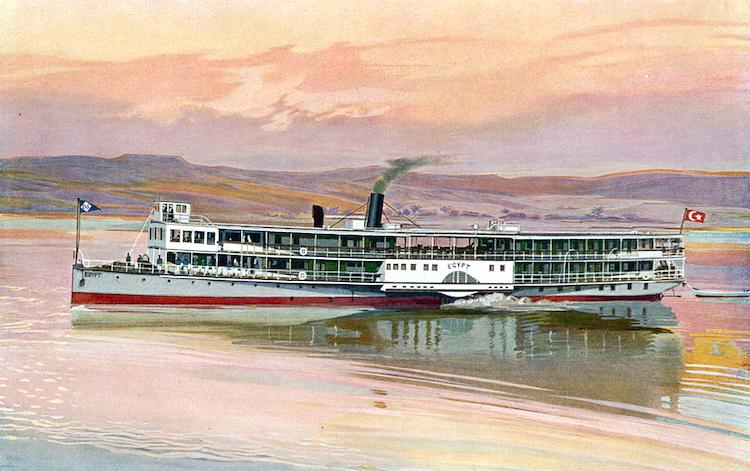
After its inception in the mid-19th century, the travel agency Thomas Cook pioneered the development of mass tourism, launching the world’s first travel guidebooks, package holidays and round-the-world tours.
Thomas Cook grew from humble beginnings, carrying temperance activists to meetings by train in the English Midlands, into a vast multinational company. In the 19th century, its tours catered to increasingly wealthy Victorians during the height of the British Empire , successfully championing a travel revolution.
But in 2019, Thomas Cook declared bankruptcy. It was the world’s oldest and longest-serving tour operator at the time, having existed for more than a century and a half and endured world wars, economic crises and the rise of the internet.
Here’s the story of Thomas Cook and the advent of global mass tourism.
Temperance trips
Thomas Cook (1808-1892), a devout Christian and advocate of the temperance movement, organised a one-day rail excursion for a temperance meeting in 1841. The trip, on 5 July, involved a train journey between Leicester and Loughborough, courtesy of an arrangement with the Midland Counties Railway Company.
Cook continued this practice over the following years, organising railway journeys for temperance activist groups around the Midlands of England. In 1845, he organised his first for-profit excursion, in the form of a trip to Liverpool for passengers from three locations – Derby, Nottingham and Leicester.
For this tour, Cook crafted a passengers’ handbook, now widely considered a precursor to the popular travel guidebook that would be produced to accompany travel excursions for decades to follow.
Branching out to Europe
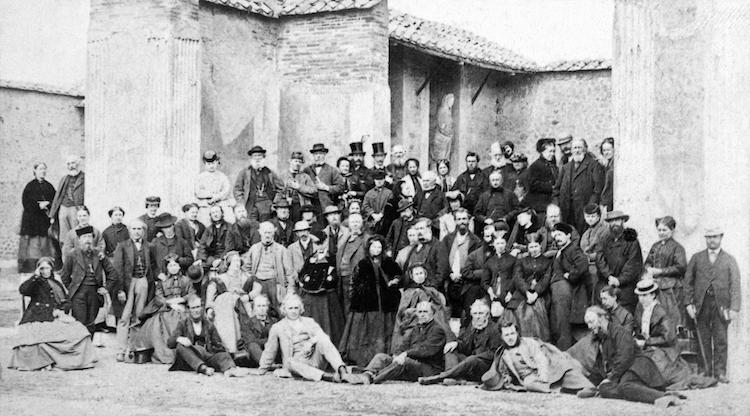
English tourist agent Thomas Cook and party in the ruins of Pompeii, Easter 1868. Cook is seated on the ground, just to right of center, in this carte-de-visite photograph.
Image Credit: Granger Historical Picture Archive / Alamy Stock Photo
By the 1850s, Cook had his sights set further afield than England. For the Paris Exposition of 1855 , for example, he organised guided trips from Leicester to Calais.
That same year, he also oversaw international ‘package’ tours, carrying parties from England to various cities in Europe, including Brussels, Strasbourg, Cologne and Paris . These excursions offered passengers everything needed to sustain them on their journeys, including transport, accommodation and meals.
By the 1860s, Cook’s sporadic temperance trips had grown into a profitable mass tourism operation – thought to be the first in global history. In response to his newfound success, Cook opened his first high-street store in London’s Fleet Street in 1865.
That same year, the London Underground opened as the first subterranean railway in the world. London was the most populous city on the planet at the time, and the enterprises of the British Empire saw wealth pouring into mainland Britain. With this came disposable income and, by extension, more Britons willing to spend large sums on international holidays.
For Cook, business was booming.
Going global
After tackling Europe, Thomas Cook went global. Now a father-son business comprising Thomas Cook and his son, John Mason Cook, the tour agency launched its first US tour in 1866. John Mason guided it personally.
A few years later, Thomas Cook escorted passengers on the company’s first trip to North Africa and the Middle East, stopping in Egypt and Palestine.
Tourism for Britons at the time was intimately tied to the endeavours of the British Empire. As British armies entered Egypt and Sudan in the late 19th century, so too did tourists, traders, teachers and missionaries, eager to capitalise on the newfound accessibility of far-flung nations and the relative safety offered by the presence of British forces there.
Thomas Cook and Son was even responsible for delivering military personnel and mail to British Egypt in the late 19th century.

1872 marked a huge moment in the history of Thomas Cook and indeed global tourism. That year, Thomas Cook escorted the first known round-the-world tour. The lengthy excursion, which lasted more than 200 days and covered nearly 30,000 miles, was targeted at wealthy Victorians – those with the time, funds and proclivity to see the world’s many cultures.
In that decade, Thomas Cook also helped invent the traveler’s cheque: the company offered a ‘Circular Note’ to its passengers which could be exchanged for currency around the world.
In the 1920s, Thomas Cook and Son launched the first-known tour through Africa. The excursion lasted some 5 months and took passengers from Cairo in Egypt down to the Cape of Good Hope.
Conquering air and sea
John Mason Cook took over primary leadership of the company in the 1870s, overseeing its continued expansion and the opening of various new offices around the world.
With this expansion came the launching of Thomas Cook’s company-owned steamers in the late 19th century. In 1886, a fleet of luxury steamers opened to passengers, offering cruises along the Nile.
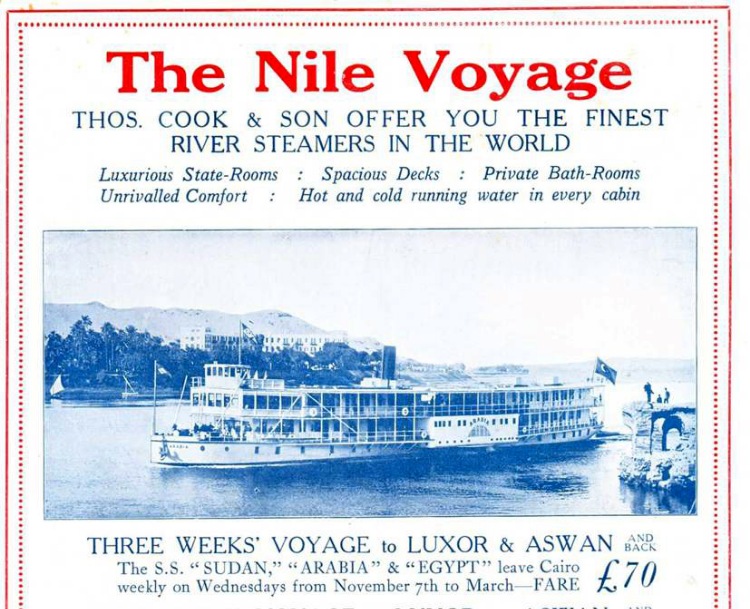
A Thomas Cook flyer from 1922 advertising cruises down the Nile. This kind of travel has been immortalised in works such as ‘Death on the Nile’ by Agatha Christie.
Image Credit: Wikimedia Commons
Thomas Cook eventually took to the skies in the 1920s, overseeing its first guided tour involving air travel in 1927. The trip carried 6 passengers from New York to Chicago, and also included accommodation and tickets for a Chicago boxing fight.
Into the modern era
During World War Two , Thomas Cook was briefly enlisted to assist with the ‘enemy mail service’, essentially the covert delivery of post from Allied regions to occupied territories.
The company went on to change hands several times during the 20th century, yet it managed to stay afloat despite various buyouts, economic crises and the rise of online travel agents.
In 2019, Thomas Cook was handed a bill of some £200 million by the Royal Bank of Scotland and other financial institutions. Unable to source the funds, the company declared bankruptcy.
At the time, Thomas Cook was responsible for more than 150,000 holiday-goers abroad. When the company collapsed, new arrangements had to be made to return every stranded customer home. The UK Civil Aviation Authority, which assisted with the repatriation efforts, called it the largest-ever peacetime repatriation in British history.
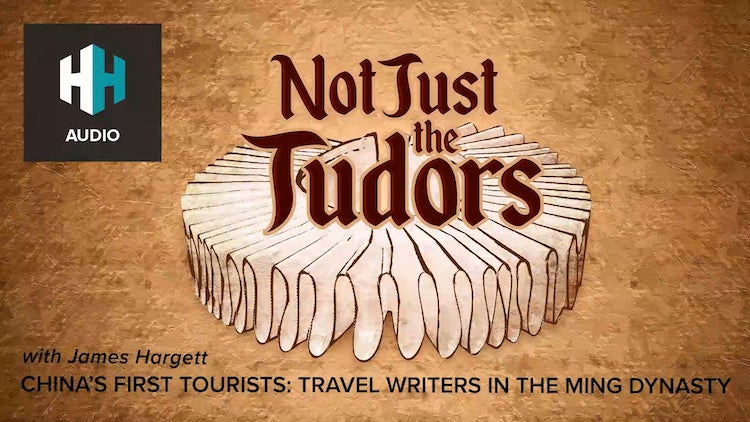
You May Also Like
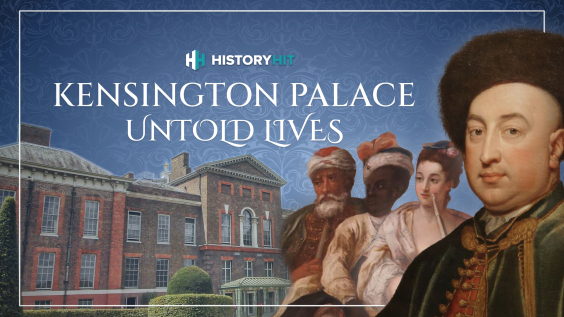
Mac and Cheese in 1736? The Stories of Kensington Palace’s Servants
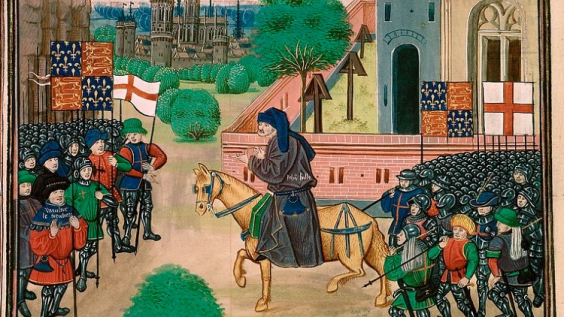
The Peasants’ Revolt: Rise of the Rebels
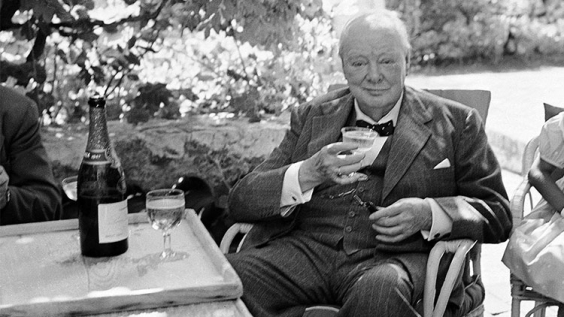
10 Myths About Winston Churchill
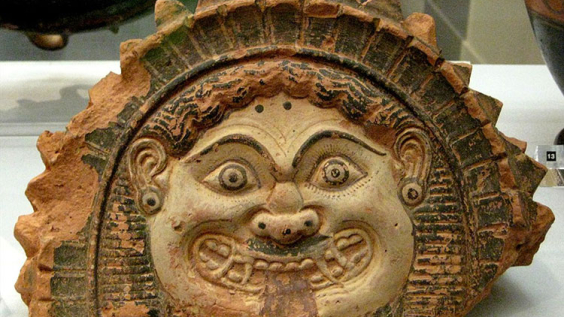
Medusa: What Was a Gorgon?
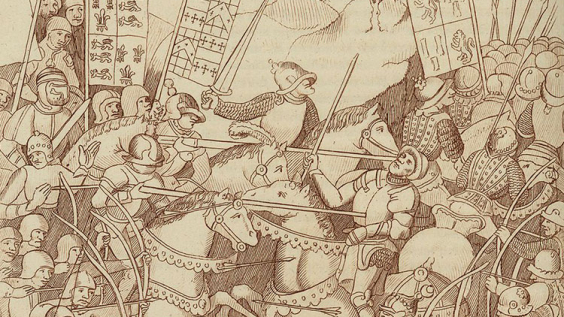
10 Facts About the Battle of Shrewsbury
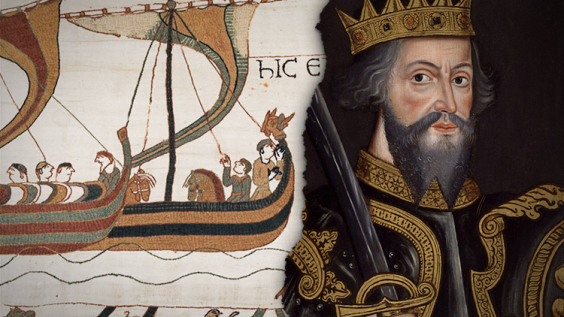
5 of Our Top Podcasts About the Norman Conquest of 1066
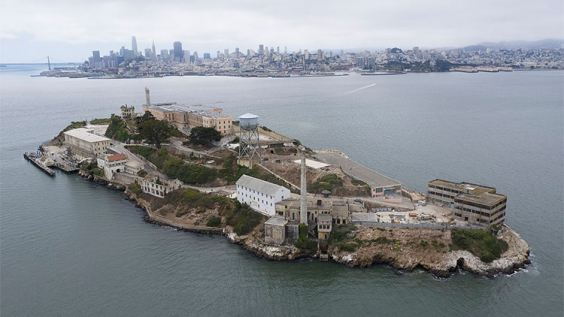
How Did 3 People Seemingly Escape From Alcatraz?
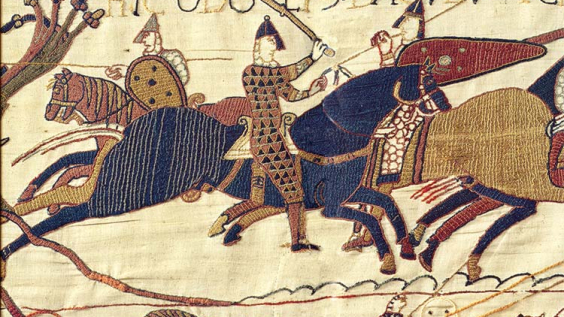
5 of Our Top Documentaries About the Norman Conquest of 1066
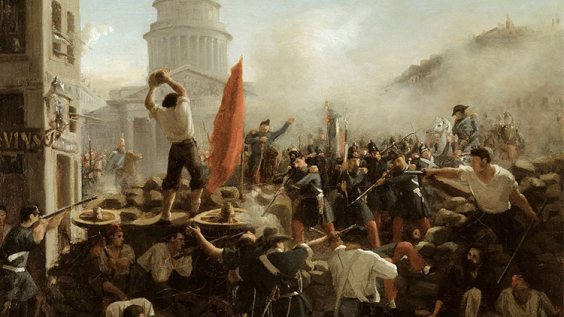
1848: The Year of Revolutions
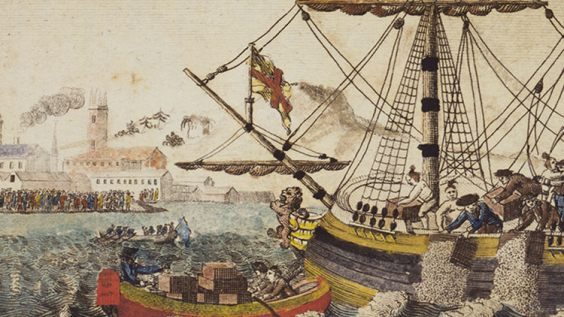
What Prompted the Boston Tea Party?
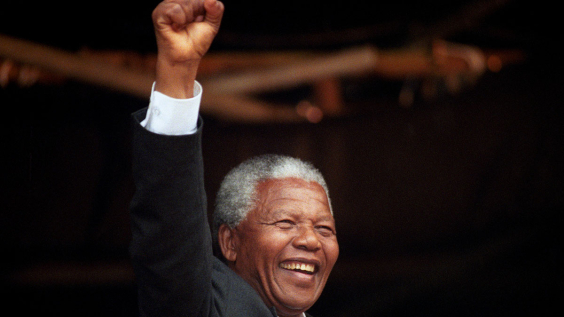
15 Quotes by Nelson Mandela

The History of Advent
Stay up to date with notifications from The Independent
Notifications can be managed in browser preferences.
UK Edition Change
- UK Politics
- News Videos
- Paris 2024 Olympics
- Rugby Union
- Sport Videos
- John Rentoul
- Mary Dejevsky
- Andrew Grice
- Sean O’Grady
- Photography
- Theatre & Dance
- Culture Videos
- Food & Drink
- Health & Families
- Royal Family
- Electric Vehicles
- Car Insurance deals
- Lifestyle Videos
- UK Hotel Reviews
- News & Advice
- Simon Calder
- Australia & New Zealand
- South America
- C. America & Caribbean
- Middle East
- Politics Explained
- News Analysis
- Today’s Edition
- Home & Garden
- Broadband deals
- Fashion & Beauty
- Travel & Outdoors
- Sports & Fitness
- Sustainable Living
- Climate Videos
- Solar Panels
- Behind The Headlines
- On The Ground
- Decomplicated
- You Ask The Questions
- Binge Watch
- Travel Smart
- Watch on your TV
- Crosswords & Puzzles
- Most Commented
- Newsletters
- Ask Me Anything
- Virtual Events
- Betting Sites
- Online Casinos
- Wine Offers
Thank you for registering
Please refresh the page or navigate to another page on the site to be automatically logged in Please refresh your browser to be logged in
Thomas Cook: A timeline of the world’s oldest tour operator
Simon calder explores 10 key years that tell the story of the legacy travel company, article bookmarked.
Find your bookmarks in your Independent Premium section, under my profile
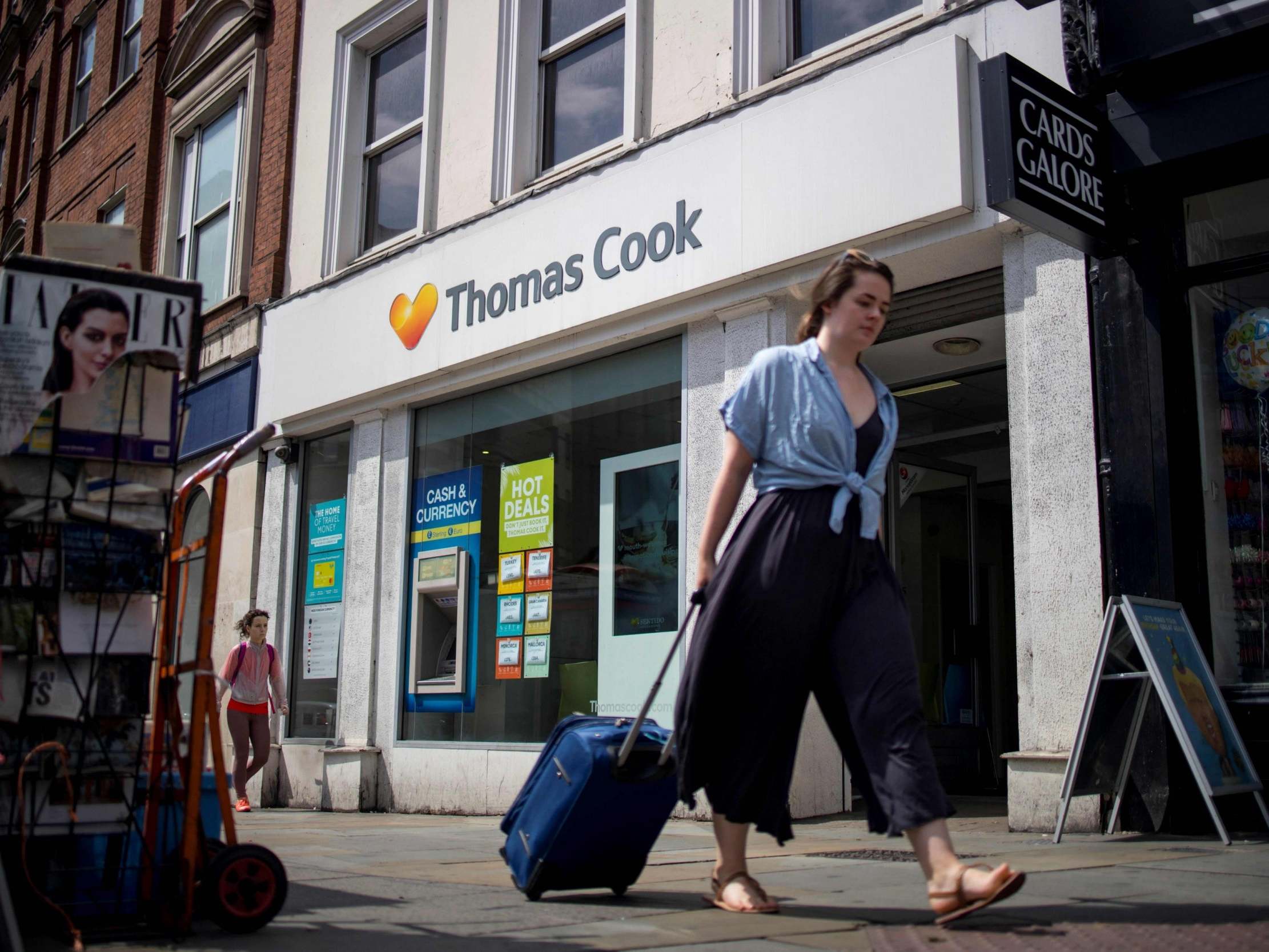
Sign up to Simon Calder’s free travel email for expert advice and money-saving discounts
Get simon calder’s travel email, thanks for signing up to the simon calder’s travel email.
As we say goodbye to the world’s oldest tour operator, here are the most important years in Thomas Cook ’s illustrious history.
1841: Rail revolution
Thomas Cook single-handedly industrialises railway tourism – chartering a train to take 500 passengers about 10 miles from Leicester to the neighbouring town of Loughborough on Monday 5 July.
The fare for the round-trip is one shilling and sixpence (7.5p). A spiritual and abstinent man, Cook organised the trip to attend a Temperance meeting. But for many of the participants, the attraction was the opportunity to travel by train for the first time.
1855: Cook goes international
The international exposition in Paris, set in the dramatic surroundings of Baron Haussmann’s newly redrawn city, provided the perfect target for Thomas Cook’s first international expedition. The steadily rising incomes and increased aspirations of the middle classes brought about by the industrial revolution convinced Cook that there would be a market for trips from London to Paris.
Thomas Cook collapse: Passengers stranded and thousands of jobs lost
He offered a complete holiday “package” (comprising travel and accommodation, as well as meals) for the first time.
1865: A travel agent is born
Thomas Cook opens a travel agency in Fleet Street, central London. It coincides with the opening of the London Underground, the world’s first subterranean railway.
1874: Cheque it out
“Cook’s Circular Note,” the prototype of the traveller’s cheque, is launched – providing a safe and easy way to carry funds abroad.
1892: Next generation
Thomas Cook dies in Leicester. The business is taken on by his son, John Mason Cook – whose initials are later used for a rebrand of the firm’s package holidays (an experiment which is swiftly and expensively reversed).

1928: Up for sale
The last two Cooks, Thomas’s grandsons Frank and Ernest, retire. They sell the business to the first of many outside owners, the railway sleeping car firm Compagnie Internationale des Wagons-Lits.
1948: Nationalisation
During the nationalisation of the UK’s railways, Thomas Cook somewhat bizarrely also becomes state-owned. Two years later, the first, embryonic mass-market package holidays by air are sold by a young man called Vladimir Raitz – comprising flights from Gatwick to Corsica, a tent on a beach and non-rationed meals.
1972: Staying the course
Thomas Cook reverts to the private sector, with the Midland Bank, hoteliers Trust House Forte and the Automobile Association buying the firm. Two years, the economic gloom of the “Three-day Week” precipitated by a miners’ strike, amplified by the Middle East oil crisis, finished off many travel companies. But not Thomas Cook.
1992: New owners
A German consortium, comprising Westdeutsche Landesbank and the LTU Group, acquire the Thomas Cook Group.
2019: It's all over
The Thomas Cook Group, by now an Anglo-German firm, ceases trading at 2am on Monday, 23 September
Join our commenting forum
Join thought-provoking conversations, follow other Independent readers and see their replies
Subscribe to Independent Premium to bookmark this article
Want to bookmark your favourite articles and stories to read or reference later? Start your Independent Premium subscription today.
New to The Independent?
Or if you would prefer:
Want an ad-free experience?
Hi {{indy.fullName}}
- My Independent Premium
- Account details
- Help centre
- International edition
- Australia edition
- Europe edition

Temperance tours to inclusive packages: a history of Thomas Cook
B y today’s standards of all-inclusive resorts with free bars and infinity pools, the first Thomas Cook holiday, which whisked customers 12 miles by train from Leicester to a temperance meeting in Loughborough, sounds like a hard sell.
But the excursion, organised in 1841 by Derbyshire cabinet-maker Thomas Cook for 500 like-minded supporters, laid the foundations of a business that made him the father of modern tourism . The former Baptist preacher believed the ills of Victorian society stemmed largely from alcohol, and saw a chance to spread the word via Britain’s flourishing rail network.
It would be another four years before Cook got into the tourist business proper, organising train trips from Leicester, Nottingham and Derby to Liverpool – this time for profit.
Then, in 1846, he ran the first of the Scottish tours that would soon become a lucrative operation. He conveyed 350 wide-eyed Sassenachs by train and steamboat to Glasgow, and for customers travelling for the first time, he offered guidebooks such as Cook’s Scottish Tourist Practical Directory – which had a chapter headed “Is It Safe for Ladies to Join in Highland Tours?”
Within a decade, Cook was running continental trips: he personally conducted a trip from Harwich to Antwerp, Brussels, Cologne, Heidelberg and Strasbourg that ended up in Paris for the International Exhibition in 1855.
The Leicester-based company became more ambitious, especially after Thomas’s son John Mason Cook joined. In 1865 they open their first travel agency on Fleet Street in London and the following year Cook junior led its first trip to America.
The world continued to shrink, and in 1873 Thomas Cook completed his first round-the-globe tour, marketed as “London to London”, for 200 guineas. About this time the firm became one of the first to use travellers’ cheques: it called them “circular notes”.
John took over in 1879 and ran the firm until his death 20 years later, when his three sons inherited Thomas Cook & Son. Its success continued into the 20th century as the skies opened up, with the company chalking up another first when it offered “pleasure trips by air” in 1919.
In 1928 the family sold up to the Belgian owners of the Orient Express, but the second world war saw it become part of the nationalised British Railways. After the war, sales took off again with the era of package holidays. By 1950, more than a million Britons were travelling abroad each year, mainly to France, Italy, Spain and Switzerland.
Thomas Cook returned to private ownership in 1972 and has seen a series of mergers and takeovers. In 2007, it merged with the UK-listed owner of Airtours, MyTravel Group , which nearly collapsed in 2011 but was bailed out by its banks . Now, 178 years on, in an industry its founder would not recognise, Thomas Cook may have come to the end of its journey.
- Thomas Cook
- The Observer
- Travel & leisure
Most viewed

The fascinating history of Thomas Cook
Disclaimer: Some posts on Tourism Teacher may contain affiliate links. If you appreciate this content, you can show your support by making a purchase through these links or by buying me a coffee . Thank you for your support!
The history of Thomas Cook plays an important role in the growth and development of the tourism industry. Thomas Cook is (or was) one of the biggest names in travel. Without this company the tourism industry wouldn’t look the way that it does today!
In this article, we take a look at the history of Thomas Cook in order to understand why this company is such an important part in the overall history of tourism .
The history of Thomas Cook: the very beginning
Thomas cook’s first excursions , the history of thomas cook & son, moving further afield , the history of thomas cook’s other successes , the modern history of thomas cook, the 1980s onwards, the collapse of thomas cook, the future of thomas cook, history of thomas cook: further reading.
Thomas Cook wasn’t just a company- there was a face behind the name! Thomas Cook himself was born in 1808 in Melbourne, Derbyshire, in the UK.
Business-minded from an early age, he started working for a local gardener at the age of 10. He earned six pence per week. At 14 he started an apprenticeship with his uncle, John Pegg, and worked for five years as a cabinet maker. He also became a Baptist missionary in 1826, touring the area as a village evangelist.
Later, in 1832, Thomas Cook moved to Market Harborough. On New Year’s Day 1833 he took the Temperance pledge. This meant he was part of a movement against the consumption of alcohol. Cook hosted meetings and held anti-liquor processions.
While walking to a Temperance Society meeting, Thomas Cook had an idea.
He decided, due to the extended Midland Counties Railway, that he would take a group of his fellow campaigners from Leicester Campbell Street Railway Station across to Loughborough to attend a teetotal rally. It was an 11 mile distance.
On July 5th 1841, Cook took around 500 people to this rally. They each paid one shilling for the privilege of a return journey with food and entertainment. He saw an instant demand for more of the same and the history of Thomas Cook begun…

Over the next few years Cook planned and executed various excursions.
In August 1845 he took a group from Leicester to Liverpool, having visited himself beforehand to arrange deals with hotels and restaurants as part of the overall trip experience for his clients.
In 1846 he arranged for 350 people to travel from Leicester to Scotland.
Then in 1851, Cook took 150,000 people to the Great Exhibition in London.
And four years later he arranged his first ever trip abroad. This was a grand circular tour of Belgium, Germany and France with the final stop being Paris for a special exhibition.
Keep reading and you’ll see that the history of Thomas Cook and the history of tourism go hand in hand…
In 1865, Cook got some business premises in London on the famous Fleet Street. This was always an important through route in the city, with businesses having been established here since the Middle Ages. It eventually became the home of British national newspapers, which it remained until the 1980s.
The history of Thomas Cook as a brand was born on Fleet Street. It was an office for Cook but also a shop: it sold guide books, footwear, telescopes, luggage and other travel essentials and accessories.
Cook introduced the hotel coupon in 1868, refining the business model. Essentially, Thomas Cook had a list of businesses (hotels as well as restaurants) and customers could buy a coupons which were to be exchanged for a meal or overnight stay at one of these establishments.
Seven years after opening the Fleet Street office, in 1872, Cook decided to partner up with his son, John Mason Andrew Cook, who was already working for him. Together they renamed the travel agency to Thomas Cook & Son. John provided a lot of commercial expertise, which allowed the company to grow.
Cook also opened a temperance hotel with his wife, Marianne Mason, located above the office.

A lot was happening at once. In 1866, the year after the Fleet Street office opened, the history of Thomas Cook moved slightly further afield.
The agency launched escorted tours of the US for British travellers, and they were the first to do so! John was the one to lead these excursions, which included tours of Civil War battlefields and more.
Later, in 1871, a partnership was born: Cook, Son and Jenkins. This was with an American businessman, but it didn’t last long and is largely forgotten about.
Also in the 1870s, Thomas Cook & Sons led the first ‘round the world’ tour. It left London in late 1872 by steamship – this headed across the Atlantic. Once in America the group boarded a stage coach. They then took a paddle steamer to Japan, then travelled overland across China and India. A lengthy trip, of course, but a fascinating one nonetheless!
Learn more: Thomas Cook: 150 Years of Popular Tourism
In the 1880s, when Thomas Cook himself had retired, John and his three sons grew the company even more. They were involved with military transport while organising tours to and of the Middle East; in 1884, the British army were transported up the Nile by Thomas Cook & Son – something quite big for the business!
By 1888, there were offices around the world. The history of Thomas Cook is one that started in Leicester and before long, was present in Australia , New Zealand and many other far-flung corners of the globe.
There are plenty of other things that Thomas Cook as a brand introduced to the travel industry .
For example, in 1874, Cook introduced something he called ‘circular notes’. These were essentially early travellers’ cheques, which offered people a secure was of using currency abroad without having to carry large amounts of cash around at any one time. The idea went on to be really popular.
Cook’s Continental Timetable launched in 1873 as a quarterly publication. It moved to being published monthly later, in 1883, and is now known as the European Rail Timetable . It was proposed by Thomas Cook employee John Bredall who thought it would be wise to publish a compendium of timetables for steamships and trains across the European continent . A softcover book, it shows all major lines and most minor lines too. Publishing was suspended in August 1939 due to World War II, and it picked up again during 1946.
It is still published today under its new name – but Thomas Cook stopped publishing it in 2013. A new company, European Rail Timetable Ltd, was born; owned by John Potter, a former member of editorial staff for the timetable, it still makes the book today. This is alongside the digital version which launched in 2016. The timetable comes highly recommended by tourists and business travellers as well as book shops, librarians, travel agents and high-profile travel writers.
What started as a family business didn’t stay that way. During the Edwardian times, travel became a much more popular activity and the business (now being run by John Mason Cook’s sons) was going extremely well. However, they sold the business to Compagnie Internationale des Wagons-Lits et de Grandes Express Europèens in 1928. This was the company who operated the Orient Express.
During World War II, however, the Paris HQ of Wagons-Lit was taken by the Germans after the Fall of France. The British assets were also taken over – by the Custodian of Enemy Property, who handled property claims created by war. Later, in 1942, Thomas Cook & Son was sold to Hays Wharf Cartage Company, which led to the company (Thomas Cook) being nationalised in 1948. It was part of the British Transport Commission.

In the 50s, the history of Thomas Cook and package holidays was solidified. The worked with scheduled (charter) airlines to sell all-inclusive tours to foreign destinations such as France, Italy , Switzerland and Spain. However these trips weren’t particularly cheap as the company didn’t want to compromise on quality. This led to a loss in share prices, and eventually the company was denationalised again in 1972.
It was now owned by a consortium made up of Trust House Forte, Midland Bank and the Automobile Association. Five years later in 1977, Midland Bank acquired sole control of the Thomas Cook and started to move administrative functions to Peterborough. By this time, the company was no longer known as Thomas Cook & Son, Ltd. It was now Thomas Cook Group Ltd.
It was during the 80s that Thomas Cook was really successful in the US. This was partly due to the aforementioned travellers’ cheques, and a whole US division of Thomas Cook was eventually sold for $1.3 billion in 1989.
During the 90s, Midland Bank was acquired by HSBC. They sold the Thomas Cook company to WestLB, a German bank, and the charter airline LTU Group. Amex bought the corporate side of things in 1994, and in 1999 the Carlson Leisure Group merged with the Thomas Cook Group Ltd.

By this time Thomas Cook had become a household name. They thousands of travel agencies and tour operators in the UK and partnerships around the world. The organisation demonstrated both vertical and horizontal integration , meaning that they had a significant market share and control over the market. There were many subsidiaries of Thomas Cook too.
Most recently in 2019, Thomas Cook collapsed.
The collapse of Thomas Cook led to various holidaymakers having to be repatriated and thousands of future holidays being cancelled. There were many potential causes of the collapse: Brexit uncertainty, of course, as well as high fuel costs, terrorist attacks and more. Hays Travel acquired all 555 of the UK Thomas Cook stores and were able to save around 2,500 jobs.

The collapse of Thomas Cook shocked the world. The history of Thomas Cook was long and the company had established itself as a key player in the tourism industry marketplace. There is not one reason why the company collapsed, but rather a plethora of reasons. Perhaps they were not innovative enough in their thinking.
They could have implemented more niche tourism products and focussed less on mass tourism , for example, as there is clear evidence that consumers have been moving in this direction for some time. But hindsight is a wonderful thing I guess, and we will never know what ‘could have been’.
So does Thomas Cook have a future? Well, maybe- but not in the same way that we have known and loved Thomas Cook.
While 2020 was been a disastrous year for much of the travel industry, it did see the ambitious relaunch of Thomas Cook Tourism by Fosun International, an online travel company with 50 employees.
Fosun was already a Thomas Cook shareholder. The company paid around £11 million for the company trademarks, social media accounts and websites in November 2019. There is certainly a lot of scope for online. products and services in the future, so we will see what the future has in store for the new ‘Thomas Cook’, it will be interesting to see how this new venture pans out…
If you want to learn more about the fascinating history of Thomas Cook, I recommend the following resources:
- Thomas Cook: The Holiday Maker
- Thomas Cook: 150 Years of Popular Tourism
Liked this article? Click to share!
Let's Look Again
A history of thomas cook & son (1841 – 2000).
Thomas Cook & Son pioneered popular tourism, and has ranked among the largest travel agencies in the world for much of its history.
Early life of Thomas Cook Thomas Cook (1808 – 1892) was born in modest circumstances in Melbourne, Derbyshire. He was raised as a New Connexion Baptist. Thomas Cook was just four years old when his father died.
Cook went to work as a gardener in Melbourne from the age of ten. His employer was a heavy drinker, and Cook noticed the detrimental effect this had on his business.
Cook was apprenticed to a wood turner in Market Harborough, Leicestershire from the age of 14. He would sometimes begin work at two or three o’clock in the morning so that he could finish work early and indulge in his passion of fishing in the River Trent.
Cook did not complete his apprenticeship, and instead went to work for a printer and publisher in Loughborough. His employer was a keen Baptist. Cook was engaged as a Baptist preacher from 1828.
Cook entered into business for himself from 1832, as a wood turner and cabinet market in Market Harborough. Cook became closely associated with the temperance movement from this time.
The travel agency business is born Cook organised an excursion from Leicester to Loughborough for 570 temperance supporters in 1841. It was the first time a British train had been chartered by a member of the public.
Cook relocated to Leicester later in 1841, where he worked as a printer and publisher.
Meanwhile, his travel agency business continued to grow. 300 people were taken to Scotland in 1846.

The growth of the railways had made travel more affordable, and Thomas Cook was quick to identify and exploit this potential market.
The Great Exhibition was held in London in 1851, and Cook arranged for 165,000 people to visit the capital. Profits were such that Cook was able to abandon the printing trade at this stage in order to devote himself to his travel agency business.
John Mason Cook John Mason Cook (1834 – 1899), son of Thomas Cook, was appointed head of a new office at Fleet Street, London from 1865. An energetic man, he made an immediate impact, and the subsequent growth of the business was due as much to the son as the father.
John Mason Cook entered into full partnership with his father from 1871, and the firm became known as Thomas Cook & Son, with an invested capital of over £250,000.

Business saw J M Cook travel an average of 50,000 miles a year between 1855 and 1873.
Thomas Cook retired in 1878, and John Mason Cook took full control of the firm.
Under the leadership of John Mason Cook, the business continued to expand until it had 84 offices and 2,962 staff (978 of them in Egypt) by 1891.
J M Cook died in 1899, and the gross value of his estate was assessed at £390,000. He was succeeded in business by his three sons; Frank Henry Cook (1862 – 1931), Ernest Edward Cook (1866 – 1955) and Thomas Albert Cook (1867 – 1914).
Conversion into a private limited company and successive owners Thomas Cook & Son became a private limited company with a capital of £800,000 from 1924.
The head office was relocated to larger premises at Berkeley Street, Piccadilly, from 1926.
Thomas Cook & Son was sold to the Compagnie Internationale des Wagons-Lits of Belgium, operators of the Orient Express, for £3.5 million in 1927. The merger created the largest travel agency in the world, and it was believed that considerable cost-savings would be made.
The sale of the business allowed Frank Henry Cook to retire as chairman in 1929. He died in 1932, with a gross estate valued at £1,054,769.
Thomas Cook & Son had operations in 300 locations, and employed over 4,000 people by 1939. The head office at Berkeley Street employed 1,500 people at peak periods.
Wagons-Lits came under German control during the Second World War, and Thomas Cook & Son assets were seized by the British government and handed to the four major railway companies.
The British railways, and Thomas Cook & Son with it, were nationalised in 1948.
Thomas Cook & Son claimed to be the largest travel company in the world in 1971. 10,000 people were employed across 420 offices.
The British government sold Thomas Cook & Son to a consortium of businesses headed by Midland Bank for £22.5 million in 1972.
Midland Bank sold Thomas Cook & Son to LTU, the third largest German travel agency, for £200 million in 1992. Westdeutsche Landesbank acquired Thomas Cook & Son the following year.
Preussag, the owner of TUI, the largest travel group in the world, acquired control of Thomas Cook & Son in 1999.
Carlson acquired Thomas Cook & Son in 2000.
One thought on “A history of Thomas Cook & Son (1841 – 2000)”
- Pingback: All’s fair in war: Faire Brothers of Leicester | Let's Look Again
Leave a Reply Cancel reply
Your email address will not be published. Required fields are marked *
Currently you have JavaScript disabled. In order to post comments, please make sure JavaScript and Cookies are enabled, and reload the page. Click here for instructions on how to enable JavaScript in your browser.
A history of branded Britain
Company-Histories.com
learn how over 7,000 companies got started!
- Listed By State
Companies by Letter
Thomas cook travel inc..
Prior to its acquisition by the American Express Company in 1994, Thomas Cook Travel Inc. was the third-largest travel agency in the United States. At the time of the takeover, Thomas Cook operated 500 offices across the country and sold one out of every 50 airline tickets in the United States. Staffed by more than 3,000 employees, the company had an impressive roster of business clients including Ford Motor Co., AT & T, and John Hancock Financial Services. Independently owned by Linda and David Paresky, Thomas Cook Travel licensed its name from the oldest travel agency in the world, The Thomas Cook Group Ltd., based in the United Kingdom.
Thomas Cook Is Founded in 1841
The Thomas Cook Group Ltd. was the eponymous creation of an industrious English entrepreneur. From a humble beginning chartering a train to a temperance rally in 1841, Cook expanded his business into one of the world's first full-service travel firms. After the resounding success of his first venture, Cook quickly expanded his operations, providing rail trips and making hotel reservations for customers for journeys all over the British Isles. Cook's excursions proved so popular that he began offering trips to Europe, North America, and--beginning in 1871 around the world. Buoyed by these successes, Cook's company was able to open 120 travel offices in the United Kingdom and abroad by 1885, and Cook himself branched out to write guidebooks. The company also remained on the cutting edge of developments in the travel industry. Thomas Cook Ltd. began offering cruise trips as early as the mid-1870s, pioneered an early form of travelers' check, and was booking air travel by 1911, a mere eight years after the Wright Brothers made history at Kitty Hawk, North Carolina.
The company also had a long history in the American market. Just months after the Civil War ended in 1865, Cook's ran its first U.S. tour, which included stops at various battlefields. Six years later, Cook formed a partnership with an American businessman that they called Cook, Son & Jenkins. This relationship subsequently dissolved acrimoniously, but by then it had helped Cook's entrench itself in the American market. To bolster its business further, the company took a pavilion at the Centennial Celebration in Philadelphia in 1876, and later expanded its offerings to include not just traditional sightseeing trips but even travel packages for immigrants coming to the United States and Canada. By 1896, Cook's American business made travel arrangements to the Klondike for gold prospectors.
Control of the company remained with the Cook family until the late 1920s. Thomas Cook himself had died in 1892, and his son and business partner did the same eight years later. His three grandsons then ran the company until the last of them retired in 1928, at which point it was sold to a Belgian travel concern, Compagnie des Wagons-Lits et des Grands Express Europeens. When Germany occupied Belgium in World War II, the company was taken over by the German Custodian of Enemy Properties, but the British government arranged for it to be re-acquired by several railway companies at the close of the war. When the railroads were nationalized in 1948, ownership of Thomas Cook Ltd. passed to the crown as well.
Although Thomas Cook had become an institution both in the United Kingdom and the United States, the company risked losing touch with younger consumers in the 1960s. As a state-run business, Thomas Cook was unable to invest the same level of funding into its operations that its private rivals could. While other travel agencies crafted new strategies to attract more customers and increase revenue, such as purchasing airlines, Thomas Cook saw its sales flatten. As a result, the British government tentatively explored selling the travel agency.
U.S. Corporate Laws Prevent New Owner of Thomas Cook from Owning U.S. Offices
Midland Bank acquired Thomas Cook in 1974. Since U.S. banking laws prohibited any national bank--such as Midland--from owning domestic travel agencies, Midland sold Thomas Cook's U.S. operations to Dun & Bradstreet in 1975. Midland did not relinquish control of the Thomas Cook name, but Dun & Bradstreet was allowed to continue to operate the U.S. travel agencies under the Cook name through a licensing agreement. Although The Thomas Cook Group Ltd. had no equity in the American operations, it did link the agencies into its travel network. More importantly, the British branch could supply the independent American offices with travelers' checks, which represented an increasing portion of The Thomas Cook Group Ltd.'s revenues. Only American Express outperformed Cook in this segment of the travel industry.
Crimson Travel Is Founded and Flourishes
At about the same time that Dun & Bradstreet made this pivotal purchase, Crimson Travel Service--the Cambridge, Massachusetts-based travel agency that would later carry the Thomas Cook American franchise--began to expand. Founded in 1965 by the husband-and-wife duo David and Linda Paresky, Crimson quickly grew through creative marketing efforts. Graced with the same gift for travel innovation as Thomas Cook, Paresky launched a number of bold initiatives. As a competitor explained in the September 18, 1994, Boston Globe, 'Paresky saw before most of us that the masses wanted to go, and he knew where they wanted to go.' Crimson chartered several immensely popular 'Cruises to Nowhere,' that brought the luxury of a cruise vacation to middle-class consumers. In 1968 the company forged a strategic alliance with a Western-themed television show called 'Boomtown,' whereby Crimson chartered mass trips for kids (guided by Trailer, the show's host) and received ample exposure in the process. The 'Boomtown' trips were a huge success and continued through the 1990s. By 1969 Crimson had opened its third Boston-area branch office, and its leisure travel business soared. By 1987 the company reported billings of $150 million.
As Crimson saw its fortune rise, the travel industry as a whole experienced tectonic changes in the 1980s. The frenetic globalization of American business meant that corporate employees traveled more frequently and purchased a growing percentage of airline tickets. Since Crimson's revenues came mostly from vacationers, not business people, the company would risk its future profitability if it did not develop the corporate side of its operations. In 1988 Crimson purchased Heritage Travel, a rival Cambridge agency. Not only was Heritage equipped with cutting-edge computer technology, but it also ran a formidable corporate business.
Thomas Cook Changes Ownership in 1988
In 1988 Dun & Bradstreet put Thomas Cook up for sale in order to concentrate on its core marketing, credit risk, finance, and directory information divisions. Publishing magnate Robert Maxwell purchased Thomas Cook in 1989, and immediately renewed the licensing agreement with Midland to use the storied Cook name. At the time of Maxwell's acquisition, Thomas Cook was a sizable operation, generating sales of $365 million and operating 60 full-service locations and nine regional reservation centers. Many industry analysts speculated that Maxwell would quickly sell the company, since publishing was his primary concern. However, Maxwell pledged to expand Thomas Cook through a series of acquisitions that would make the franchise the leading American travel service firm.
But despite his protestations to the contrary, Maxwell sold a 50 percent stake in Thomas Cook to the Pareskys' Crimson/Heritage business in 1988. With Maxwell, the Pareskys presided over the third-largest agency in the country, with revenues topping $1.3 billion. David Paresky served as president, chairman, and chief executive of his new empire, and he moved Thomas Cook's corporate headquarters from New York City to Cambridge. The co-owners quickly turned to bolstering Thomas Cook's roster of corporate clients.
While the ownership of Thomas Cook changed hands in the United States, the keeper of the coveted license--The Thomas Cook Group Ltd.--went through its own shifts. In 1992 Midland sold its subsidiary to LTU Group, one of Germany's largest tour operators, and Westdeutsche Landesbanke, a German bank. Westdeutsche Landesbanke purchased 90 percent of The Thomas Cook Group Ltd.'s shares, while LTU Group controlled the remaining ten. The Orange Country Register was quick to point out to its readers that the sale in no way affected Thomas Cook Travel Inc. 'The company licenses the name and expects to continue doing so under the new ownership,' noted the paper.
The Pareskys Gain 100 Percent Control of Thomas Cook Travel
Although Thomas Cook Travel Inc. had no problems with the license, the company did endure some turbulent times in 1991 when Maxwell died suddenly. One of his privately held companies, Headington Holdings Limited, went into bankruptcy. Headington owned Maxwell Travel Inc., which in turn owned Maxwell's 50 percent share of Thomas Cook. A number of potential buyers hungrily eyed the stake in Thomas Cook, including Midland Bank, which had by then divested the bank that had prevented it from owning the chain in 1979. Paresky had right of first refusal, though, and in 1993 he and his wife purchased the Maxwell stake.
Even with complete control of Thomas Cook Travel, Paresky planned no major changes. 'We're continuing with the same strategy we've had before, differentiating our service through innovation and quality,' he told The Boston Globe on January 12, 1993. 'I don't think our operating philosophy will change.' 1993 sales soared to over $1.7 billion, and the company ran approximately 500 offices throughout the United States.
Paresky's efforts to bolster Thomas Cook's corporate accounts had succeeded. At the close of 1993, 84 percent of the company's sales were from businesses. Thomas Cook's list of clients was impressive. Ford Motor Co., Fidelity Investment, Hewlett-Packard, and John Hancock Mutual Life Insurance Co. all made their travel arrangements through Thomas Cook. In 1994 the company won three more substantial accounts--the British Embassy, Walsh America, and Pharmaceutical Marketing Services Inc.
Sale to American Express
Despite their success, the Pareskys approached arch-rival American Express about selling Thomas Cook. 'American Express will bring more size and more strength and more ability to invest in our people,' Paresky explained to Travel Weekly on September 15, 1994. To the Boston Globe , Paresky admitted that the cost of upgrading technology to better serve global business travelers was a factor in the decision to sell. American Express had much to gain from the purchase. Already gigantic--with over 1,700 travel offices in more than 120 nations--American Express would boost its annual sales an additional 33 percent with this new division. The acquisition also had significant prestige value. Although American Express had recently snapped up five other large agencies, the Cook deal was to be the largest takeover in the history of the travel industry.
The transaction was finalized in September 1994 with American Express paying $375 million for the company. Although they had relinquished their ownership interests, the Pareskys remained involved in the business. Both were appointed vice-presidents, and in 1995, David Paresky was reported to be 'in line' to become president of American Express Travel.
American Express also moved to acquire the corporate accounts of The Thomas Cook Group Ltd. (which represented about ten percent of the British company's total revenues). While this segment of the business was lucrative, The Group was willing to part with it to in order to concentrate on servicing leisure travelers and on its burgeoning financial services division. However, American Express was not able to obtain from The Group the rights to the venerable Thomas Cook name. The Pareskys' licensing agreement had been due to expire in 1999, and, according to the Guardian , The Thomas Cook Group Ltd. took immediate steps to secure a new licensee. As a result, all former Thomas Cook offices were to be re-christened American Express.
Source: International Directory of Company Histories , Vol. 33. St. James Press, 2000.
Quick search
Company histories.
As consumers, we often take for granted all the hard work that goes into building a great company. We see them around but we don't know what goes on behind the scenes. Finally, we can read about how these great companies came about with Company Histories. .
Share This Story

Companies by State
- Connecticut
- Massachusetts
- Mississippi
- New Hampshire
- North Carolina
- North Dakota
- Pennsylvania
- Rhode Island
- South Carolina
- South Dakota
- West Virginia
Interesting Companies
- Next Media LTD
- Cygne Designs, Inc
- Prada Holdings B.V.
- Gulfstream Aerospace Corporation
- Cannondale Corporation
- New Balance Athletic Shoe, Inc.
- Ocean Spray Cranberries, Inc
- Nordstrom, Inc
- Banta Corporation
Copyright (c) 2022 Company-Histories.com. All rights reserved. Privacy Policy
This American Said He Had to Pay $2,400 to Get Home After Travel Company Thomas Cook Collapsed
T he collapse of one of the world’s oldest travel agencies has impacted an estimated 600,000 travelers all over the world on Monday—including some Americans.
Thomas Cook collapsed into liquidation in the early hours of Monday morning after rescue talks failed to secure $250 million in contingency funding, leaving many thousands who paid for vacations with the company without a return ticket home.
“We are sorry to inform you that all holidays and flights provided by these companies have been canceled and are no longer operating,” the Thomas Cook said, adding that all Thomas Cook retail shops have also closed.
Thomas Cook is a British company, but it attracted customers from all over the world, particularly Europe.
British stranded travelers are now directed to turn to the U.K.’s Civil Aviation Authority—which is working to fly back passengers who booked their flights with the travel agency and were due back to the U.K. between Sept. 23 and Oct. 6.
On Monday, Condor Airlines , a German airline subsidiary to Thomas Cook, said that it currently had 240,000 customers abroad awaiting flights to return home.
The travel agency also advised passengers who were due to fly out of the U.K. with Thomas Cook Airlines that their flights were canceled.
While few Americans are likely to be impacted, at least one Florida resident said he spent more than $2,000 to get home after booking a trip to Scotland with the company.
BBC Scotland spoke to American Joe Datolli, who was stuck at Glasgow Airport with his mother Sally waiting for a flight back to Orlando.
“It’s been frustrating… While we were asleep, ready to head back in the morning, they went out of business and there’s nobody to be seen,” he said.
Datolli told the BBC that he and his mother were able to book a flight to Orlando from Dublin but it ended up costing them nearly $2,400 dollars more.
Joe Datolli has had to pay $1600 to get a flight home from Glasgow to Florida today after the #ThomasCook collapse: pic.twitter.com/udPTqqHfxL — Clyde 1 News (@Clyde1News) September 23, 2019
“As we’re standing here trying to book another flight the prices keep climbing or the seats keep getting taken. It’s becoming more and more difficult,” he said.
The collapse of the agency has also affected thousands of employees.
In a statement, Thomas Cook Chief Executive Peter Fankhauser, apologized to customers and employees.
“I would like to apologize to our millions of customers, and thousands of employees, suppliers and partners who have supported us for many years. Despite huge uncertainty over recent weeks, our teams continued to put customers first, showing why Thomas Cook is one of the best-loved brands in travel,” he said. “This marks a deeply sad day for the company which pioneered package holidays and made travel possible for millions of people around the world.”
Here is what to know about Thomas Cook:
Why did Thomas Cook collapse?
Faced with Brexit, poor mergers and increased competition, the 178-year-old company finally fell to its demise on Monday.
Key to its downfall is Thomas Cook’s merger with MyTravel, a U.K.-based package travel company, in 2007. What had initially started out with hope, ended up in disaster. Thomas Cook ended up with huge debts that proved impossible to manage as, MyTravel had only made a profit once since 2001. The impact of the merger came to a head in May after Thomas Cook reported a record loss of £1.5 billion ($1.85 billion) and a steep drop in summer sales.
Thomas Cook also faced new competition from lower cost rival Jet2Holidays, putting the company’s profits under fresh pressure . Previously, the market had been split between Thomas Cook and Tui. Within two months, Thomas Cook had to issue two profit warnings .
Brexit didn’t help their situation either—the original March 29, 2019 Brexit deadline meant that people were nervous about booking holidays .
In August this year, there was hope that Thomas Cook could break free from disaster after it agreed to a $1.1 billion rescue deal with Fosun, a China-based investment company, Thomas Cook’s biggest shareholder and its debtholders.
However, as of Monday, Thomas Cook collapsed into liquidation after talks with shareholders, lenders and the U.K. government failed to come up with a rescue plan after the company’s banks demanded a further $250 million.
The agency was a popular one-stop-shop for travelers—known for its all-inclusive travel packages: the agency would book flights, hotels and tours for travelers.
Marc-David L. Seidel, professor at the University of British Columbia Sauder School of Business says travel agencies like Thomas Cook have become less relevant and necessary for travelers during the internet age.
“The rise of online travel information shifted power in the industry so that individual consumers no longer had to rely on brick and mortar travel agencies for expertise as much,” he tells TIME. “This intensified as the internet transitioned to more of an online travel community model where individual travelers share information about everything travel related to each other. That readily available and detailed information further reduced the power of travel agencies which had traditionally been the primary source of such expertise.”
Seidel adds that the rise of Airbnb might have also played a part.
“The growth trend of small travel providers such as individuals offering up rental units through internet platforms also puts pressure on organizations like Thomas Cook as a portion of their revenue was based on lodging,” he says.
Are American travelers affected?
While the bulk of Thomas Cook customers were based in Europe, the agency offered services to major U.S cities including New York City, Orlando and San Fransisco.
The State Department says that it is not able to track how many U.S. citizens are currently affected because American are not required to register their travel to a foreign country.
A State Department spokesperson tells TIME that the agency is currently monitoring the situation and that travelers should make their own arrangements to return to the United States.
“If Americans are destitute and without resources to get back to the United States, they should contact the U.S. Embassy or Consulate in the country where they are traveling to help them get in touch with family members or to evaluate other options,” a state department spokesperson said.
Frederic Dimanche, the director at the Ted Rogers School of Hospitality and Tourism Management at Ryerson University tells TIME that the effect on American passengers will be “not much” and that agency had a limited presence in the U.S.—with most of the company’s business coming from the U.K., Germany and Scandinavian countries.
“Thomas Cook had offices in the U.S., but beyond that most operations are European… this will likely be inconsequential for (travelers),” he says.
Seidel also says that the agency going out of business will most likely not have too much of an effect on American travelers.
“They have limited service in some cities—basically, it’s major cities and the leisure market, and a lot of that service would be outbound rather than inbound, so people visiting the States from Europe and a lot of their stuff was offered as packages,” he says.
More Must-Reads From TIME
- The 100 Most Influential People of 2024
- Coco Gauff Is Playing for Herself Now
- Scenes From Pro-Palestinian Encampments Across U.S. Universities
- 6 Compliments That Land Every Time
- If You're Dating Right Now , You're Brave: Column
- The AI That Could Heal a Divided Internet
- Fallout Is a Brilliant Model for the Future of Video Game Adaptations
- Want Weekly Recs on What to Watch, Read, and More? Sign Up for Worth Your Time
Write to Gina Martinez at [email protected]

Download the free Kindle app and start reading Kindle books instantly on your smartphone, tablet, or computer - no Kindle device required .
Read instantly on your browser with Kindle for Web.
Using your mobile phone camera - scan the code below and download the Kindle app.

Image Unavailable

- To view this video download Flash Player
Follow the author

Thomas Cook Traveller Guides Moscow & St. Petersburg Paperback – January 1, 2012
Popular, compact guides for discovering the very best of country, regional and city destinations.
- Print length 192 pages
- Language English
- Publisher UNKNO
- Publication date January 1, 2012
- Dimensions 5.5 x 0.5 x 7.75 inches
- ISBN-10 184848545X
- ISBN-13 978-1848485457
- See all details

Editorial Reviews
From the back cover.
The traveller guides series are informative and concise, and are aimed at mainstream travelers wanting to discover something a little different on their trip. These indispensable guides offer the perfect blend of culture, history, practical information, mapping, photography and listings.
Product details
- Publisher : UNKNO; 5th edition (January 1, 2012)
- Language : English
- Paperback : 192 pages
- ISBN-10 : 184848545X
- ISBN-13 : 978-1848485457
- Item Weight : 10.4 ounces
- Dimensions : 5.5 x 0.5 x 7.75 inches
About the author
Chris booth.
Discover more of the author’s books, see similar authors, read author blogs and more
Customer reviews
Customer Reviews, including Product Star Ratings help customers to learn more about the product and decide whether it is the right product for them.
To calculate the overall star rating and percentage breakdown by star, we don’t use a simple average. Instead, our system considers things like how recent a review is and if the reviewer bought the item on Amazon. It also analyzed reviews to verify trustworthiness.
- Sort reviews by Top reviews Most recent Top reviews
Top reviews from the United States
Top reviews from other countries.
- Amazon Newsletter
- About Amazon
- Accessibility
- Sustainability
- Press Center
- Investor Relations
- Amazon Devices
- Amazon Science
- Sell on Amazon
- Sell apps on Amazon
- Supply to Amazon
- Protect & Build Your Brand
- Become an Affiliate
- Become a Delivery Driver
- Start a Package Delivery Business
- Advertise Your Products
- Self-Publish with Us
- Become an Amazon Hub Partner
- › See More Ways to Make Money
- Amazon Visa
- Amazon Store Card
- Amazon Secured Card
- Amazon Business Card
- Shop with Points
- Credit Card Marketplace
- Reload Your Balance
- Amazon Currency Converter
- Your Account
- Your Orders
- Shipping Rates & Policies
- Amazon Prime
- Returns & Replacements
- Manage Your Content and Devices
- Recalls and Product Safety Alerts
- Conditions of Use
- Privacy Notice
- Consumer Health Data Privacy Disclosure
- Your Ads Privacy Choices
Key dates in the history of tour company Thomas Cook
- Medium Text
Compiled by Keith Weir; editing by James Drummond
Our Standards: The Thomson Reuters Trust Principles. New Tab , opens new tab

Business Chevron

ASIA Dollar recoils at 160 yen, Tesla's China joy
A look at the day ahead in Asian markets.
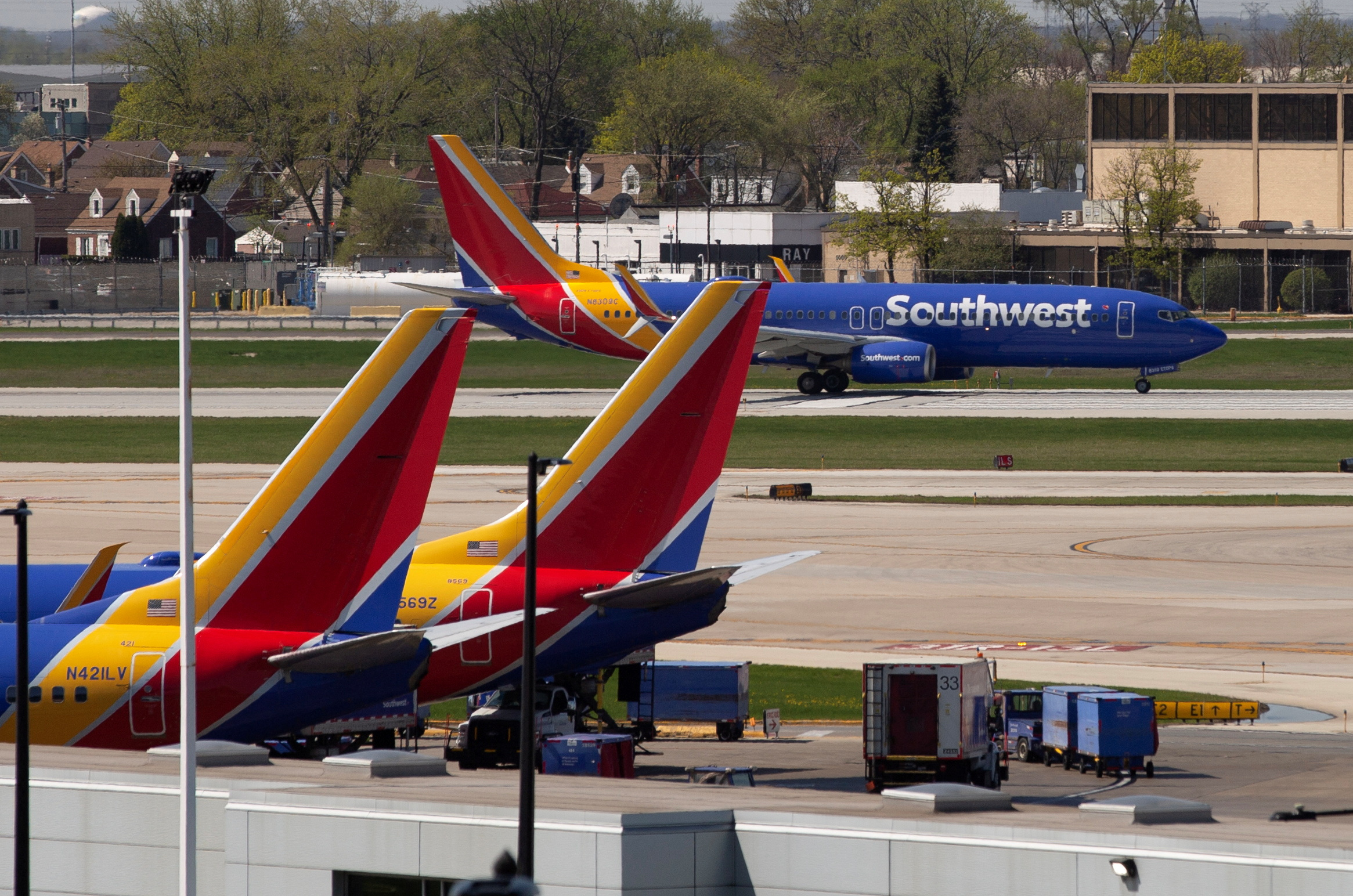
You are using an outdated browser. Please upgrade your browser to improve your experience.
We use cookies to improve your website experience and provide more personalized services to you, both on this website and through other media. By continuing to use this website, you agree to our use of cookies as explained in our Cookie Policy . Please read our Cookie Policy for more information on how we use cookies and how you can disable them.
New User? Register
- Manage bookings
- Cancellation
- On Behalf Booking
- MyQuotation
We're unable to sign you in because the password entered incorrect.
Your request for OTP will be sent to registered email id and mobile number, if not registered please do the same.
You exceed the OTP limit. Please try again after some time
Don't have an account?
- Contains between 8-12 alphanumeric characters.
- Can add special character but not mandatory(Only !, @, #,$,%,^,&,* to be used).
- Does not contain White spaces
I would like to be kept informed of special Promotions and offers. I hereby accept the Privacy Policy and authorize Thomascook to contact me.
Already have an account?
- Your existing Google or Facebook Id will be a Thomascook ID
- No need to remember different Ids & Passwords
- One Click login
Fill in the email Address that you used to register or book with Thomascook.
We will reset and send your new password.
Please enter the valid email address
Your request for new password has been accepted.
The new password would be emailed to the registered email address, if not registered please do the same

Museums In Moscow
- International Tourism
- Moscow Tourism
- places to visit in Moscow

There are innumerous museums of various interestsin Moscow. Some of them are listed below:
- Museum of History of Moscow
- Fersman Mineralogical Museum
- Bulgakov Museum in Moscow
- Schchusev Museum of Architecture
- Zoological Museum of Moscow University
- Polytechnic Museum
- Pushkin Museum
- State Historical Museum
- Museum of the Great Patriotic War
- Kremlin Armoury
- Tretyakov Gallery
- Memorial Museum of Cosmonautics
- Moscow Museum of Modern Art
Recommended moscow Holidays Packages
International honeymoon packages.
Popular Tourism Destinations
Most Trending International Holidays
2018 Primetime Emmy & James Beard Award Winner
A History of Moscow in 13 Dishes
Jun 06 2018.
War, hunger, and some of the world’s great doomed social experiments all changed the way that Moscow eats.
Moscow, the European metropolis on Asia’s western flank, has always been a canvas for competing cultures. Its cuisine is no different. The ancient baselines of winter grains, root vegetables, and cabbage acquired scaffolding from both directions: eastern horsemen brought meat on sticks, western craftsmen brought pastries, and courtly French chefs came and drowned it all in cream.
History has a place on the plate here, as well: war, hunger, and some of the world’s great doomed social experiments from Serfdom to Communism to Bandit Capitalism all changed the way that Moscow eats. So in the spirit of all of those grand failures, we—a Russian chef and an American writer—will attempt here to reduce the towering history of this unknowable city to 13 dishes, with some Imperial past but a special emphasis on the more recent decades of culinary paroxysms as Moscow emerged from its Soviet slumber.
Olivier Salad

To visualize the long marriage between French and Russian cuisines, picture Peter the Great, on a diplomatic sojourn to Paris in 1717, a “ stranger to etiquette ”, meeting the 7-year-old boy-king Louis XV and lifting him in the air out of sheer elán. These things were simply not done, and yet, there they were. Peter’s joyful (and often envious) fascination with all things French took hold, among other places, in the kitchen. He brought French chefs back to his palaces, and then the lesser nobility followed suit, and when the first restaurants emerged in Moscow, they also spoke French. The Hermitage Restaurant, which was open from 1864 until history intervened in 1917, had a Francophone Belgian named Lucien Olivier as a chef, and he made a salad that was a perfectly unrestrained combination of French flavors and Russian ingredients: grouse! Veal tongue! Proto-mayonnaise! The ingredients now tend toward the pedestrian—boiled beef, dill pickles, various vegetables all bound with mayonnaise—and it has become a staple of Russian cuisine, especially on New Year’s. And yes, if you’ve ever seen the lonely Ensalada Rusa wilting behind the sneezeguard of a Spanish tapas bar, that is supposed to be a successor to the Olivier. But in Moscow, you should eat Matryoshka ’s version, which is not the original recipe but has some of that imperial richness: crayfish, quail, sturgeon caviar, and remoulade, all under a translucent aspic skirt, for 990₽ ($16).
There’s a type of expression around bottling things—bottled lightning, summer in a jar, etc.—that feels very apt here. What exactly is bottled with vareniye (jam)? A lot more than just fruit. These jams, which tend to be thinner than western varieties—with whole berries or fruit chunks in syrup—are bottled with a lot of Russian identity. There’s the Russian love of countryside. Deep dacha culture of summer cottages and personal orchards. Traditional naturopathy (raspberry vareniye taken with tea will fight fever). And above all, friendship is bottled here— vareniye made from the overabundance of fruit at one’s dacha is the most typical Russian gift, real sharing from real nature, even in the often-cynical heart of Europe’s largest megacity. Visitors who are short on lifelong friendships in Moscow can pick some up fine vareniye at any Lavka Lavka shop (we recommend the delicate young pine cone jam) or, curiously enough, at many Armenian stores.
Borodinsky Bread

The clinical-sounding title of Lev Auerman’s 1935 classic Tekhnologiya Khlebopecheniya ( Bread Baking Technology) doesn’t promise scintillation. But Auerman’s recipe for rye bread changed Russian bread forever. An older legend had it that the bread was baked dark for mourning by a woman widowed in the battle of Borodino in 1812, but the real birth of the bread came from Auerman’s recipes. A modification on sweet, malted Baltic breads, Auerman’s Borodinsky bread was 100% rye and used caraway or anise. The recipe has evolved a bit—today it is 80% rye and 20% wheat high extraction flour and leans more on coriander than caraway. But its flavor profile (sweet, chewy) as well as its characteristic L7 mold —a deep brick of bread—has made it easily identifiable as the traditional, ubiquitous, every-occasion bread of Moscow. You can buy it everywhere, but the Azbuka Vkusa high-end markets have a reliably good sliced version.
Buckwheat Grechka
Look closely at those Russians who have followed their money to live in London, or are vacationing in Cyprus or Antalya. See the slight melancholy that not even cappuccinos or sunshine can erase. It’s not because Russians are gloomy by nature; it’s probably because there is no real grechka outside of Russia and Ukraine, and that is devastating. Buckwheat grain and groats— grechka (or grecha in Saint Petersburg)—are deep in the culture. It’s a wartime memory: May 9 Victory Day celebrations feature military kitchens serving buckwheat like they did at the front. It’s a little slice of Russian history that lies somewhere between oatmeal and couscous. In Moscow, eat it at Dr. Zhivago with milk (180₽/US$2.90) or mushrooms (590₽/US$9.50), and rejoice.
Mimoza Salad

This fantastically expressive egg-and-canned-fish salad is a testament to Soviet ingenuity—it’s the ultimate puzzle to make a drastically limited food chain sparkle—and the universal human thrill of layering foods. The geological creation starts with a base layer of fish, then layers of grated cooked potato, mayonnaise, shredded cheese, grated carrots, sweet onion, diced egg whites and then capped with a brilliant yellow crumble of boiled egg yolk. It sits there on the plate, dazzling like the flowering mimosa tree it is named after. The taste? Well, it’s comfort food. Pick some up to go at any Karavaev Brothers location —the excellent deli chain sells it for 650₽ (US$10.40) a kilo.
It seems odd, almost impossible, to imagine a time in Russia before shashlik. It’s meat on a stick, something that all humans should have had on the menu since at least the time of Prometheus. But shashlik as we know it know—cubes of marinated meat cooked with vegetables over a mangal grill—didn’t really take off in Russia until the early 1900s. And due to a lack of suitable meat in much of the Soviet era (there were no meat cattle herds, only dairy), we’re starting the clock on shashlik in the late Soviet period. Despite its relatively recent (re)appearance, it is now the ubiquitous grill phenomenon of Russia, a welcome ritual of summer.

Much of Russian cuisine has borrowed heavily from Central Asia and further east over the millennia ( pelmeni anyone?), but plov is a striking example of an entire eastern dish making its way directly into Russian households. With the collapse of the Soviet Union and upheaval in many Central Asian Soviet Republics, mass economic migration to Moscow took off in the late 80s and early 90s. Central Asians today are the lifeblood of the Moscow labor force (part of up to 10-12 million Central Asian migrants living in Russia), and plov—rice steamed in stock with meat and vegetables—has jumped from the migrant communities to the homes of Muscovites everywhere. It has developed an unfortunate reputation for being a food that even finicky kids will eat, so there is a lot of harried domestic plov being made. But you can get a fully expressed Uzbek version at Danilovsky Market, online at plov.com , or at Food City—the surf-and-turf Tsukiji of Moscow.
The Big Mac

So many of the difficulties in American-Russian relations come down to one foundational attitude problem: The Americans (that’s half of this writing duo) were incredibly, distressingly smug through the entire fall of the Soviet Union. We mistook Soviet failure for an American victory, and that made all the difference. What does that have to do with a Big Mac? Well, when Russia’s first McDonald’s opened on Pushkinskaya in 1990 and 5000 people turned out to wait in line for the first taste of America, we back home in the states mistook it for culinary and commercial superiority. But there was something more complicated happening: Russians had been denied Western goods for so long and with such force that any outside identity was much-needed oxygen. And the long-term victory, as McDonald’s has continued to thrive in post-Soviet Russia, really belongs to the local franchise, which used higher-quality ingredients than in the U.S. and created a chain that was successful not because of its American identity but because of its Russian modifications. We wouldn’t recommend eating at any McDonald’s, especially not when there is Teremok for your fast-food needs, but having a soda in the original location is one way to sit and ponder the sin of hubris. And to use the free toilet and Wi-Fi.
The crown jewel of Levantine meat preparations, perhaps the single greatest street meat in the world: Shawarma. It first came to Moscow with a shawarma joint across from the Passazh mall, opened in the early 90s by Syrian cooks who dazzled masses with their sizzling, spinning, spiced meat emporium. Lines that stretched into the hundreds of people weren’t uncommon in those heady early days. And even though the original spot closed many years ago, Moscow shawarma only grew from there, mutating into the beast it is today, where you’re likely to find chicken, cabbage, mayo and a thin tomato sauce all combining to make the Levant a distant memory.
Fish Tartare aka Sashimi
One result of the aforementioned American smugness is that the West seemed surprised at how rapidly 1990s Russia assimilated some of the most hardcore capitalist traits, including but not limited to conspicuous consumerism. Moscow’s new elite was very, very good at that. What could be more conspicuous that recreating a restrained, exclusive seafood cuisine from Japan in the chaotic, landlocked megacity of Moscow? The very improbability of high-end sushi and sashimi in Moscow fueled much of its allure, and even though the trends have moved on from sushi, you can still tell the emotional attachment that the oligarch class has to those formative wastes of money. Sumosan restaurant started in Moscow back in 1997 and has since expanded to Monte Carlo and Londongrad , where they serve a dish that they call Fish Tartare, among others, in their restaurants and through their private jet catering service.
Blue Cheese roll
If the early elite sushi restaurants in Moscow were the frivolous edge of a food phenomenon, then Yakitoriya , a chain which started in the late 1990s, democratized it with affordable sushi rolls geared to local tastes. The Blue Cheese Roll, available now on their menu, seems like the apex (or nadir) of the Russianized roll: salmon, smoked eel, cucumber, cream cheese, Blue Cheese sauce. It might not be Jiro’s dream, but a true Russian middle class, one that can work honestly, earn meaningful salaries, and have a freaky sushi roll at the end of the week just like the rest of us—that’s something worthing dreaming for. Blue Cheese Roll, Yakitoriya, 417₽ (US$6.70)

If you’re American, have you ever wondered why tacos took over middle America but sopes remain virtually unknown? It’s curious how a country can assimilate some foods from their neighbors and but remain blissfully ignorant of others. That may explain what took place two years ago in Moscow, when the city seemingly discovered, as if for the first time, the bagged awesomeness that is khinkali , a soup dumpling from Russia’s southern neighbor Georgia. It became very trendy very quickly, and khinkali joints sprouted across Moscow like griby after a rain. But it wasn’t just that dish: what they were serving was a bit of the imagined southern, sybaritic lifestyle of the Caucasus, as promised in restaurant names like Est’ Khinkali Pit Vino ( Eat Khinkali Drink Wine ). Your best bets are at the stately Sakhli , around 100₽ (US$1.60) per soft, fulsome dumpling, or the more modernized Kafe Khinkalnaya on Neglinnaya Street , 100₽ (US$0.80) a dumpling.

We have named burrata—yes, that Italian alchemy of cheese and cream—the Perfect Dish of Moscow 2018, if only because it is the Dish of the Moment, ready to be enjoyed at the height of its faddishness now, and equally ready to be replaced when the city decides to move on. Read Anna Maslovskaya’s masterful breakdown of why—and where—to eat burrata in Moscow.
Top image: Olivier salad with chicken. Photo by: Kvector /Shutterstock
R&K Insider
Join our newsletter to get exclusives on where our correspondents travel, what they eat, where they stay. Free to sign up.
The Perfect Dish: The Moscow Burrata
Featured city guides.

IMAGES
COMMENTS
1871: The official name of the company becomes Thomas Cook & Son. 1872/73: Thomas Cook organizes and leads the world's first round-the-world tour. The journey takes 222 days and covers more than ...
In October 2019, it was announced that all the Thomas Cook travel agency offices in UK will be taken over by Hays Travel and rebranded under their name. Most of the reopened offices are being staffed by former Thomas Cook employees. Hays Travel is now the largest independent travel agency in the UK, and you can read more about them here.
Thomas Cook & Son. Thomas Cook (22 November 1808 - 18 July 1892) was an English businessman. He was best known for founding the travel agency Thomas Cook & Son. He was also one of the initial developers of the "package tour" including travel, accommodations, and the like.
The story of a company that changed the world of travel forever. Thomas Cook was closing in on two centuries of business before its demise in September 2019. After efforts to seek a £200 million bailout failed, Thomas Cook fell into liquidation, ending a business that had operated for 178 years. The failure of Thomas Cook Airlines became the ...
After its inception in the mid-19th century, the travel agency Thomas Cook pioneered the development of mass tourism, launching the world's first travel guidebooks, package holidays and round-the-world tours. Thomas Cook grew from humble beginnings, carrying temperance activists to meetings by train in the English Midlands, into a vast ...
Thomas Cook is the creator of the travel industry as we know it! Born on 22nd November 1808 in Melbourne (no, not that one; the one in Derbyshire, England), he made use of the new-fangled Victorian railways and steamships to arrange the first package trips. Thomas Cook died on 18th July 1892.
Thomas Cook's history - in pictures. ... Now the company which Cook founded is the largest travel agency in the world. It became a private limited liability company in 1924, and in 1948 its shares ...
Thomas Cook opens a travel agency in Fleet Street, central London. It coincides with the opening of the London Underground, the world's first subterranean railway. 1874: Cheque it out
Thomas Cook (born November 22, 1808, Melbourne, Derbyshire, England—died July 18, 1892, Leicester, Leicestershire) was an English innovator of the conducted tour and founder of Thomas Cook and Son, a worldwide travel agency. Cook can be said to have invented modern tourism. Cook left school at the age of 10 and worked at various jobs until ...
Thomas Cook in 1850, with advertising posters dating from around 1910. ... a history of Thomas Cook. ... In 1865 they open their first travel agency on Fleet Street in London and the following ...
Thomas Cook, one of Britain's oldest travel companies, ceased trading last night. Here, Chris Leadbeater recalls a trip down memory lane with the company's archivist. T homas Cook. The two ...
2011 - Thomas Cook merges its UK retail operations with those of the Co-operative Group and the Midlands Co-operative Society, creating the UK's largest chain of travel agents.
The history of Thomas Cook plays an important role in the growth and development of the tourism industry. Thomas Cook is (or was) one of the biggest names in travel. ... The timetable comes highly recommended by tourists and business travellers as well as book shops, librarians, travel agents and high-profile travel writers.
Thomas Cook & Son pioneered popular tourism, and has ranked among the largest travel agencies in the world for much of its history. Thomas Cook (1808 - 1892) was born in modest circumstances in Melbourne, Derbyshire. He was raised as a New Connexion Baptist. Thomas Cook was just four years old when his father died.
A Thomas Cook store in the United Kingdom, which is now operated by Hays Travel. Thomas Cook Group plc was a global travel group, headquartered in the United Kingdom and listed on the London Stock Exchange from its formation on 19 June 2007 by the merger of Thomas Cook AG — successor to Thomas Cook & Son — and MyTravel Group until 23 September 2019, when it went into compulsory liquidation.
Independently owned by Linda and David Paresky, Thomas Cook Travel licensed its name from the oldest travel agency in the world, The Thomas Cook Group Ltd., based in the United Kingdom. Thomas Cook Is Founded in 1841. The Thomas Cook Group Ltd. was the eponymous creation of an industrious English entrepreneur. From a humble beginning chartering ...
September 23, 2019 6:27 PM EDT. T he collapse of one of the world's oldest travel agencies has impacted an estimated 600,000 travelers all over the world on Monday—including some Americans ...
traveller guides Moscow & St. Petersburg, 5th (Travellers - Thomas Cook) [Thomas Cook Publishing] on Amazon.com. *FREE* shipping on qualifying offers. traveller guides Moscow & St. Petersburg, 5th (Travellers - Thomas Cook)
The bosses of Thomas Cook <TCG.L>, the world's oldest travel company, were meeting lenders and creditors in London on Sunday to seek a last-ditch deal to save the company.
Get highlights, history, location, timings, how to get there, interesting facts and much more. We use cookies to improve your website experience and provide more personalized services to you, both on this website and through other media.
You cannot resist our Two Hearts of Russia (7 Days &6 Nights), Golden Moscow (4 Days &3 Nights), Sochi (3 Days & 2 Nights), Golden Ring (1 Day & 2 Days), and many more. As a leading travel agency specializing in the tour to Russia and Former Soviet Republics, we are connecting the travellers from every part of the world for more than 10 years.
The clinical-sounding title of Lev Auerman's 1935 classic Tekhnologiya Khlebopecheniya (Bread Baking Technology) doesn't promise scintillation. But Auerman's recipe for rye bread changed Russian bread forever. An older legend had it that the bread was baked dark for mourning by a woman widowed in the battle of Borodino in 1812, but the real birth of the bread came from Auerman's recipes.